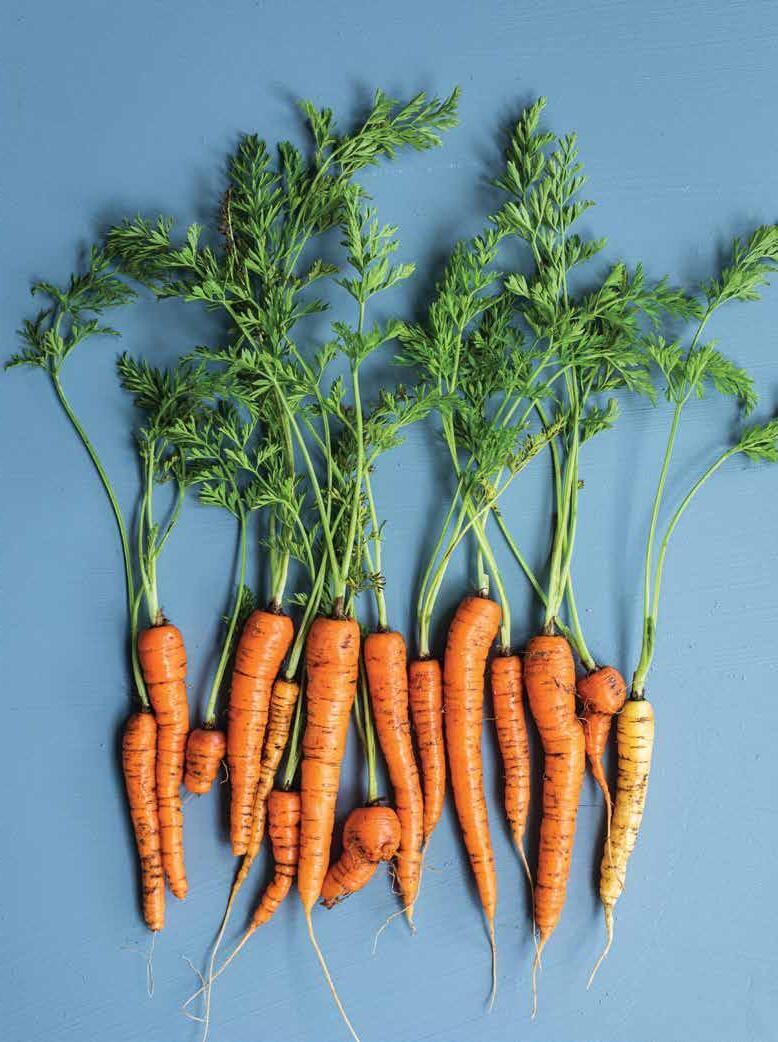
WWW.NOURISHMAGAZINE.CO.NZ ISSUE NO. 52 SPRING 2023 BAY OF PLENTY, NZ ISSUE NO. 52 SPRING 2023 WWW.NOURISHMAGAZINE.CO.NZ FRESH LOCAL FLAVOUR BAY OF PLENTY, NZ
by Simon Wright
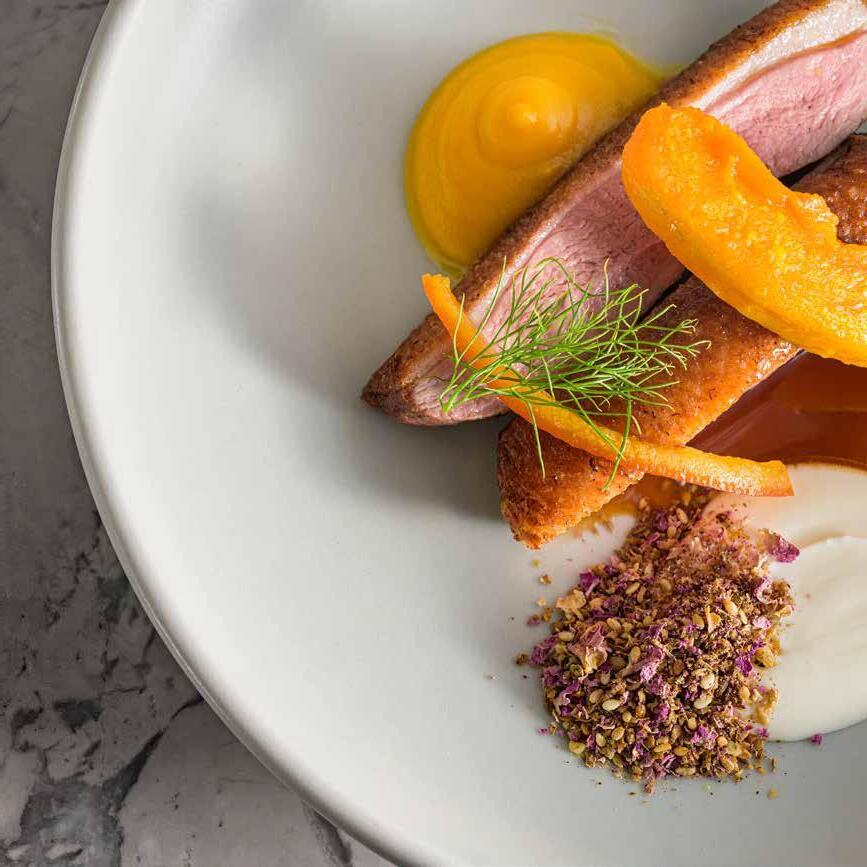
51 Willow St, Tauranga CBD P. 07 574 8200 www.clarencetauranga.co.nz
EDITOR Vicki Ravlich-Horan
HEAD DESIGNER Sara Cameron, Minted Design Co.
PROOF READER Nikki Crutchley (Crucial Corrections)
CONTRIBUTORS Denise Irvine, Emma Galloway, Amber Bremner, Liz French, Lynda Hallinan, Kathy Paterson, Harriet Boucher, Rachel Hart, Fiona Hugues, David Wrigley, Vicki Ravlich-Horan, Emily Gray
COVER IMAGE Ashlee DeCaires. Carrots courtesy of Tomtit Farm
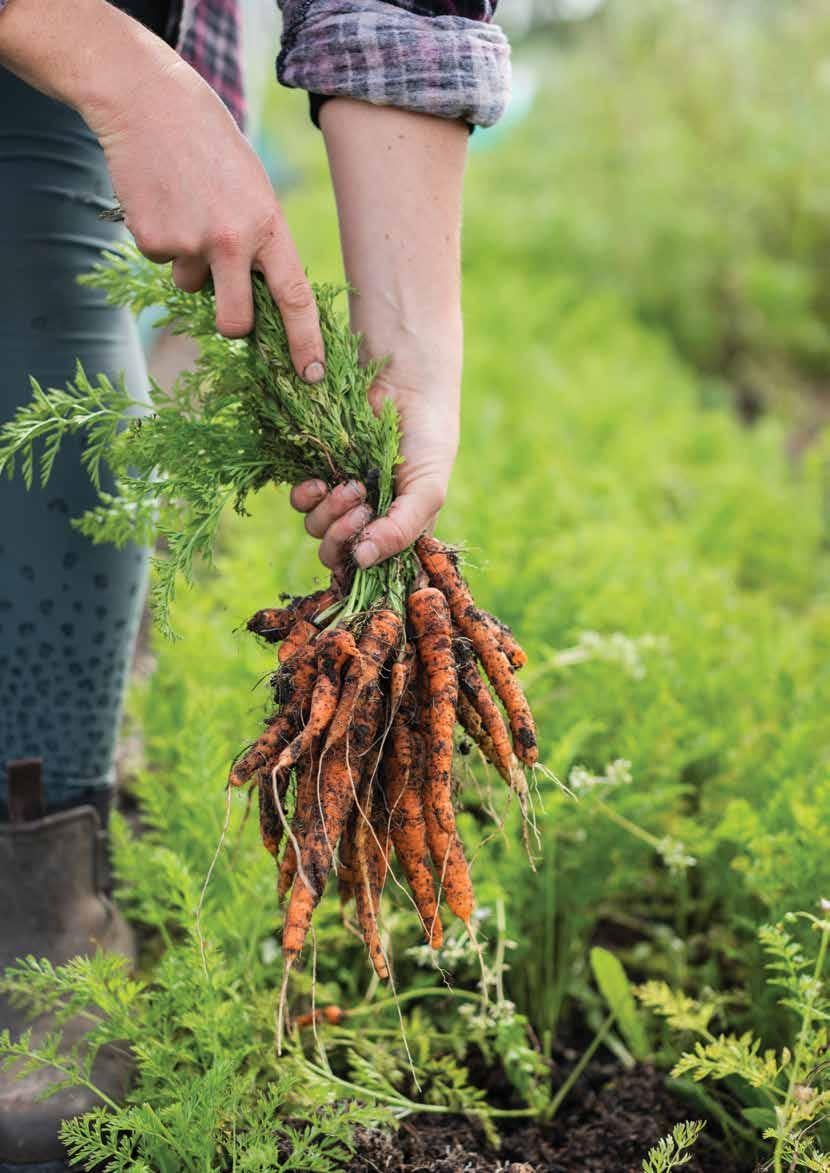
PHOTOGRAPHERS Brydie Thompson, Ashlee DeCaires, Emma Galloway, Amber Bremner, Kathy Paterson, Fiona Hugues, Vicki Ravlich-Horan, Alex Spodyneiko
ISSN 2324-4372 (Print) | ISSN 2324-4380 (Online)
ADVERTISING ENQUIRIES
Vicki Ravlich-Horan vicki@nourishmagazine.co.nz
0210651537
8 It's Time to Make Waste History 10 Falling into Place 12 Mighty Oak in Morrinsville 19 Better Together 22 All the Way to Mexico 30 Building Relationships Before Building Homes 32 A Fresh Experience with a Smart Caribbean Vibe 34 What's Hot this Spring with Chalk & Charcoal 63 Grinding Out Waste 68 LegaSea 72 Lucky Taco features 6 Vic’s Picks 7 News 28 Gardening 36 Nutrition 37 Beauty 42 Harriet’s How To 70 Nourish Learn 74 Events 75 Marketplace regular recipes 15 Shell Yeah! 25 A Taste of Mexico 38 Carrots Are Tops 44 The Ultimate Pork Belly 47 Sweet Things Are Gifted Like These 50 Cultured 54 Happily Avo After 57 Berry Best of Spring 60 Rhubarb 66 Waste Not
FOODIE TOURS

TASTE OF
Join us in for an amazing two weeks in Mexico. We’ll see mezcal being made visit markets, try our hand at making tortilla and if you’re brave eat some bugs. We will visit ancient sites, swim with turtles, eat fabulous food, learn about traditional artisans and meet amazing people before sneaking in some time to relax on the beach.
$9950pp twin share. Includes:
14 nights 4 star accommodation
all breakfasts and 5 lunches
7 dinners
Internal flight Mexico City
– Cancun
Oaxaca cooking class
Oaxaca, Puebla and Mexico
City city tours
Mezcal, chocolate and queso tastings
Market visits

Swim with turtles
Boat ride in Las Coloradas
Biosphere to look for Flamingos
Visit ancient sites from Teotihuacan, Cholula, Mitla, Tulum and if you want, Chichén-Itzá
Relax pool or beachside in Tulum
Joining Vicki on this small group tour is Phil our Spanish speaking Kiwi guide as well as local and specialist guides in each region.
TASTE OF
27 TH MARCH- 1 ST APRIL 2024
South Australia is rich in food and wine treasures. Join Vicki this Easter and enjoy one of her favourite wine making regions. It’s the perfect time to visit with an abundance of produce available, the vines changing colour and the perfect temperature.

We’ll taste amazing wines, learn more about the history and terroir of the region, visiting both big and small wineries. But wine is not all we will be sampling with gin and beer on the list too along with artisan cheese, chocolate and more.
Cost $4500pp (twin share). Includes:
Return AirNZ flights from Auckland to Adelaide
5 nights 4 star accommodation
5 fantastic dinners, all breakfasts and 2 lunches
Adelaide walking tour
Hands on Italian cooking class
Farmers market visit
Maggie Beer Farm Shop experience
Wine, gin, chocolate and cheese tastings
It’s no secret that after food, travel is my passion so I am excited to be able to combine the two and host these fabulous tours. Our tours are small (max 10 pax) and bespoke, so you can get a real taste of the places we visit.
For me, travel broadens the mind and fosters understanding. And of course, food is the universal force, the element that helps us connect and discover all while having amazing experiences.
VICKI RAVLICH-HORAN - NOURISH EDITOR & TOUR GUIDE
For more information on our tour, the full itineraries and how to book please email vicki@nourishmagazine.co.nz | www.nourishmagazine.co.nz
2 ND – 16 TH MARCH 2024
Here's to Spring
Ah, spring, the most anticipated season of them all! And after a winter that feels like it has gone on for nearly a year, this spring really does have a lot riding on it.
I’m not waiting around for the New Zealand weather to warm up, instead I’m heading to Sicily for back-to-back Nourish Taste of Sicily tours. So for a couple of weeks I will be eating, drinking and discovering what this amazing island has to offer. Make sure you follow along on social.

Or if you are keen to join me on a wonderful foodie jaunt, check out our Taste of South Australia tour this Easter or Taste of Mexico tour in March. Details for both are on our website.
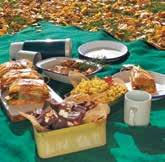
If you want to learn more about Mexico, head to page 22 to read about our trip this year. And if inspired you can turn your Sunday roast into a Mexican fiesta with my recipes on pages 25. This winter we have been busy selling our latest cookbook and have been absolutely thrilled with the feedback we have been getting. If you haven’t already, I can highly recommend buying a copy or two – they make a great gift!

While promoting the book we have been doing a few events and demos, and one of the recipes I have been pulling out is our carrot couscous. This is a great recipe when you want a salad but traditional salad ingredients, like tomatoes and cucumber, are
pricey and out of season. I also like it because it heroes the humble and always cheap carrot.
On page 38 you’ll find more great carrot recipes. Spring heralds in cheaper avocados so check out page 54 where Amber Bremner avos a go. Fiona Hugues adds a bit of culture and celebrates New Zealand Cheese Month (October) on page 50, while Emma Galloway makes the best of berry season on page 57.
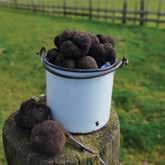
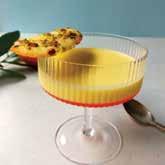

Change is in the air at Falls Retreat, so I caught up with Emma and Brad to hear their plans for our favourite spot in Karangahake. Read about it on page 10. We also catch up with Tash and Shane from Oak, a new eatery in Morrinsville on page 12, find out about Sailor Galley & Rum Bar on page 32 and delight in some seafood recipes from Neil Sapitula at Saltwater on page 15.
Enjoy!
Vicki Ravlich-Horan Editor



NOURISH | ISSUE 52
FOLLOW US ON SOCIAL! instagram facebook @nourishmagazine PAGE 5 | WWW.NOURISHMAGAZINE.CO.NZ
Vic's Picks
FALCON ENAMELWARE AT READ BROS
You’ll often see enamelware used in Nourish. I love the timelessness of it as well as its sheer practicality. Some of our pieces are very old, proving both these points. Falcon Enamelware is porcelain fused onto heavy-gauge steel, giving it its many admirable qualities – durability, smoothness and chemical resistance. As well as being dishwasher and oven safe it can also be used on gas and electric hobs.
So if you are looking to add to or start your collection of enamelware, Forage @ Read Bros Hardware in Thames have a wonderful collection with pieces starting from $8.

1.
Forage @ Read Bros Hardware 308 Pollen Street, Thames www.readbros.co.nz
2.
LOOKING FOR THAT PERFECT GIFT?
Janet from Pacifica Home and Garden store is just back from a buying trip in Melbourne, so expect to see some new treasures popping up in store, including a new line of linen clothing perfect for spring and summer.


With a wide range of homewares and gift options, from lovely baby and children’s gifts to furniture and homeware and everything in between, Pacifica is a great place to start ticking off your Christmas list. Janet says, “We pride ourselves on providing quality, contemporary choices for our customers and are always searching for products which will inspire with the latest designs and trends.”
Here are a few of Janet’s picks.
• New styles of hats, handbags and jewellery with a range of overseas and New Zealand inspired designs.
• Quality ceramic homewares for your table, in natural shades and textures. Perfect for those summer get togethers.
• Pops of colour from cushions, silk flowers and indoor plant pots.
• Unique pieces of furniture, including mirrors and artwork to complement our coastal living and casual lifestyle vibe, are handpicked and not to be found elsewhere.
Pacifica Home and Garden Store
3.
NOURISH TOURS

It’s no secret that after food, travel is my passion, so I am stoked to be taking our first foodie tours to Sicily this October. And with huge interest in our Taste of Tours we have more in the pipeline, including two fabulous weeks in Mexico in March and five nights in South Australia over Easter.
If you are interested in either of these tours or others we may have coming up, please email me for more details and how to book vicki@nourishmagazine.co.nz
112 Tara Road, Papamoa PAGE 6 | WWW.NOURISHMAGAZINE.CO.NZ
NEWS BITES
Dates for the Flavours of Plenty Festival 2024 have been confirmed for 4–14 April next year. The festival has also just been named a finalist for Best Lifestyle Event 2023 and Best Local Government Event 2023 in the New Zealand Event Awards.
Neil Sapitula, head chef at Solera and Saltwater Seafood Grill and Oyster Bar, recently won the Rising Talent – One to Watch Award in the Cuisine Good Food Guide 2023/2024. If you want to try some of Neil’s food and are up for some fun, Solera has their second Game Night on the 17th of September. This Blind Wine Tasting Dinner (The Australian Edition) is a six-course dinner paired with a masked wine for your team to guess the colour, grape variety, vintage, region, and producer of each wine and possibly win a $200 voucher.

Picnicka has been recognised for their outstanding fit out, winning the Interior Awards 2023 Hospitality category and being shortlisted for the Restaurant and Bar Design award 2023. We think the food is pretty good too!
There has been a changing of the guard at Vetro Rotorua, with new owners Priti and Ansh taking over in July.
After nearly 12 years at Tay Stret Café, Hamish and Rieko have passed on the reins to Chanel and Justin Rawiri who also own Pearl Kitchen in Papamoa.
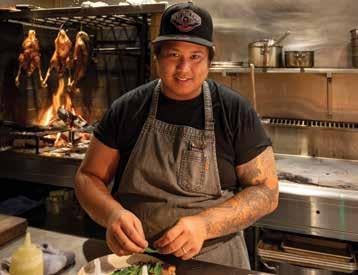

TAURANGA ARTS FESTIVAL (19–29 OCTOBER)


Audiences are in for a real treat with some of our finest theatre makers, writers, comedians, poets, singers and artists set to energise the city with 10 days of arts. The biennial Tauranga Arts festival is back for its 13th year. Artistic director Shane Bosher says, “Festivals are engines of emotion and belonging, and so this year we offer you a roadmap to happiness. There’s a bit of provocation and more than a bit of pleasure. From street dance battles to interactive space adventures, there really is something for everyone.” This includes international rising star and altpop sensation Theia, novelist Emily Perkins, filmmaker Gaylene Preston, award-winning theatre maker Katie Wolfe, Morgana O’Reilly of Mean Mums fame, The Veils’ Finn Andrews, groundbreaking director Anapela Polata’ivao, local hero Lynley Dodd, revered Samoan actor Maiava Nathaniel Lees, “That Bloody Woman’s” Esther Stephens, Ockham Book Award winner Tusiata Avia, NZTrio and songbirds like Anna Coddington, Julia Deans and Mel Parsons.
For the full programme and tickets go to taurangafestival.co.nz
News
PAGE 7 | WWW.NOURISHMAGAZINE.CO.NZ
NEIL SAPITULA – ONE TO WATCH KIM AND NOEL CIMADON FROM PICNICKA
IT’S TIME TO MAKE WASTE HISTORY
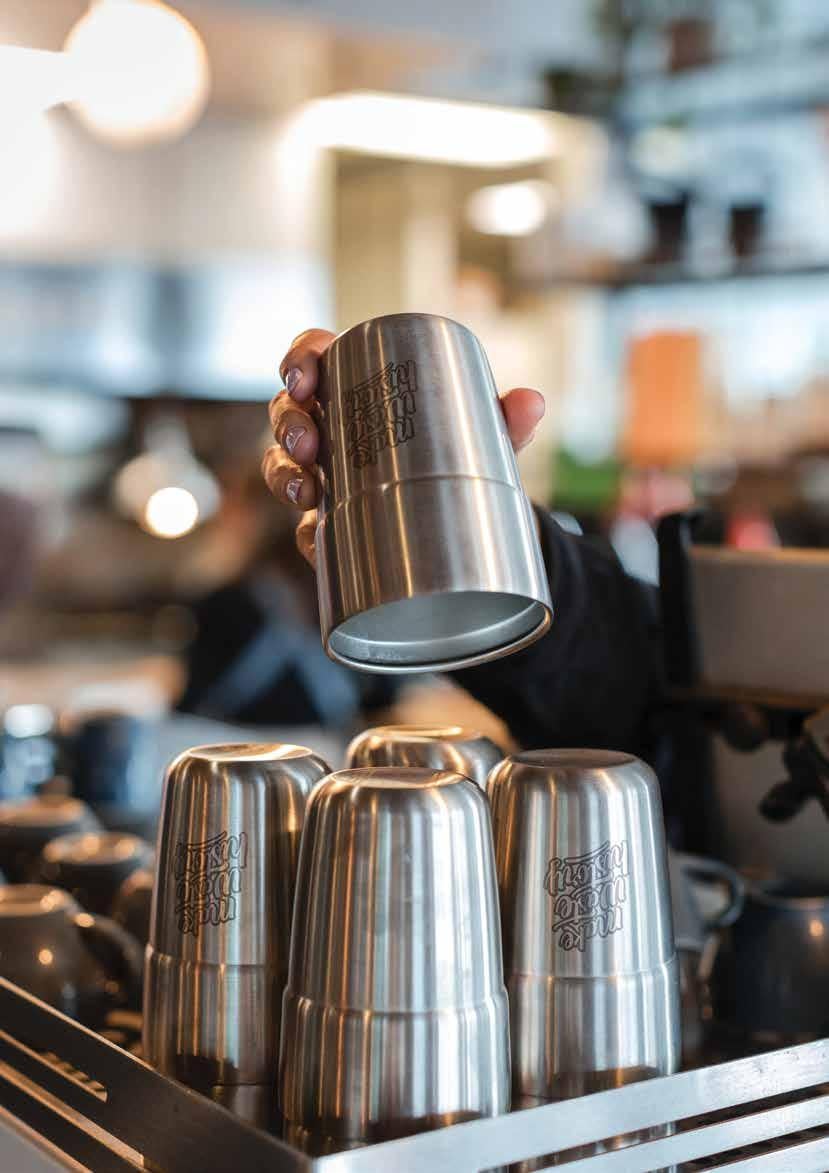
PAGE 8 | WWW.NOURISHMAGAZINE.CO.NZ
WORDS EMILY GRAY | IMAGES ALEX SPODYNEIKO
“We have the solution to make waste history.” So states Vincent Callister. The founder of event waste management company Waste Wizards is on a mission: to provide coffee drinkers with an easy and sustainable alternative to single-use coffee cups. Needing to diversify Waste Wizards during the Covid-19 pandemic, Vincent introduced Make Waste History to the Bay of Plenty. It’s a subset of the reusable packaging management system, Again Again – a nationwide platform that enables consumers to borrow reusable takeaway products from cafés. Whilst New Zealand is the first country in the world to ban singleuse produce bags, when it comes to disposable coffee cups, The Packaging Forum estimated in 2019 we used 295 million annually. Vincent believes it’s now closer to a million a day. And those cups, which can’t be recycled, end up languishing in landfill. It’s a big price for the environment to pay, to satisfy our daily caffeine fix. Like burnt coffee, it’s enough to leave a bitter taste in your mouth. Admittedly some cups are compostable, but here’s the catch. The majority can’t be composted at home.
“Single use cups are an example of greenwashing because of what they are, single use and a waste of resources,” says Vincent. “Technically some are compostable, but they have to be composted in controlled environments due to their PLA –polylactic acid lining [there are no facilities in the Bay of Plenty that accept compostable packaging]. And the truth is, they don’t add any nutrients to the compost. We’re just making dead dirt.” That’s why initiatives, like Make Waste History that champion a circular economy, are so important. “We want to prevent waste, not divert it,” explains Vincent.
How it works is simple: as a customer, you download the Again Again app and find a café that is part of the Make Waste History network. Next time you want a coffee, you choose one of the reusable stainless steel cups and scan it out via the app. You then have eight days to return the cup (it doesn’t even need to be washed) to any café that is part of Make Waste History’s network, if not you incur a $3 fee.

Tauranga City Council’s Resource Wise® Community Fund, The Packaging Forum, and the (Taupō) Great Lakes District Council have, via their community funding grants, funded the project to get the network started with enough cups for 15 cafés. Currently this is 30 cups per café but can increase and extend to bowls too. Now it’s time to get cafés on board. Vincent particularly wants to grow the network in the Bay of Plenty and Taupō but hopes that eventually you’ll be able to pick up a Make Waste History cup in the Mount, take it on your road trip and drop it off at another partaking café across the country. For those cafés that do sign up they are provided with staff training and receive promotion through marketing campaigns across social media, the news and radio as well as a spot on Again Again’s map on the app.
Since April 2023, eight cafés have joined Make Waste History and another twelve are keen to join. “We want more locally owned cafés to join, so our communities can prosper when the imminent wave of behaviour change regarding single-use products sweeps our streets. We’re hoping these innovators will incentivise everyone to try reusable takeaway cups,” says Vincent.
The Cozy Corner in Taupō was an early adopter of the scheme and owner, Camilla Baker, is a staunch supporter. "We have an environmental responsibility as a café. They’re good quality coffee cups and we take pride in the fact that we’re on the right track to help the environment.”
It’s a sentiment that Connie Richards, owner of Tauranga’s Elizabeth Café and Larder, echoes. Despite recycling and eliminating as much plastic as possible, Connie hopes more people will start to opt for reusable takeaway cups and encourages other cafés to join Make Waste History. “At least you feel like you’re doing something that is in the right direction [to help reduce waste],” Connie says.
As for customer uptake, Camilla says, “It’s slowly growing, and as more people start to walk around with the Make Waste History cups, we hope more will want to join.”
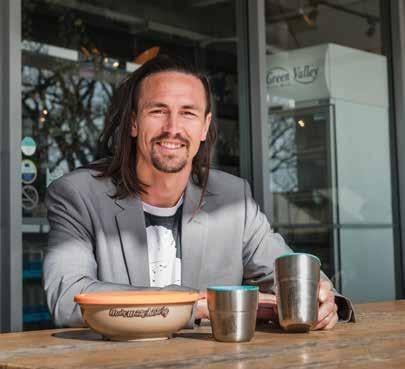
Initial feedback has shown that whilst some customers are eagerly making the swap, others are initially hesitant about downloading the app. But as Connie has found “it’s about changing habits. Once you take customers through the process, and they see how easy it is, they think it’s brilliant. They feel good about being part of the change, and love seeing how many cups they have saved from the landfill.”
So café owners and coffee drinkers, are you ready to make the swap? As Camilla says, “Let’s work on this together so we can stop waste.”
__ www.makewastehistory.org
PAGE 9 | WWW.NOURISHMAGAZINE.CO.NZ
FALLING INTO PLACE
Eleven or so years ago I began hearing murmurs about a great spot in the Karangahake Gorge, Falls Retreat.
These murmurs began to grow and so too did my frustration of not being able to get there to check it out firsthand. So I did the most sensible thing I could think of and booked my husband and I in for a romantic getaway. We stayed in their cute Rose Cottage, enjoying a leisurely walk to nearby Owharoa Falls, but what I really remember was the meal. I think I claimed it the best one for that year. My efforts to check out Falls Retreat were not wasted, in fact they added to the overall experience. Over the following decade, we have become regulars at Falls, be it for a quick pizza when driving through or a celebratory meal with the Nourish team.
Brad King and Emma Walters opened Falls Retreat 12 years ago. Tucked up a long tree lined driveway, with two rustic cabins, an array of fruit trees, chooks and a large vegetable garden, the idea was always to offer guests something different, an experience as well as great food. “Taking care of people has always been at

the heart of what we do here,” says Emma. “As we live on site, we always had this sense of wanting to welcome people to our home and provide them with an all-round experience which incorporated our charming cottages, organic veggie gardens and amazing food made from scratch.”
Within just a few years of opening, Falls had become a favourite spot for those travelling through the Karangahake, those enjoying the nearby rail trails and those from Hamilton, Auckland and Tauranga wanting to enjoy Brad’s food and the unique atmosphere of Falls Retreat. Emma says, “We found that people loved our rustic vibes, amazing food, warm Kiwi hospitality and surrounded by nature – our slice of the ‘good life’!”
Their success continued to grow and so too did the business, particularly the bistro. Emma says, “The busier and more popular we got meant that it got harder to stay true to our values. We sometimes had 200 people per day heading up our driveway to dine with us, meaning making everything from scratch and offering a personal experience was becoming unachievable.”
WORDS VICKI RAVLICH-HORAN
PAGE 10 | WWW.NOURISHMAGAZINE.CO.NZ
IMAGE BRYDIE THOMPSON
The couple and their two children (now 11 and 15) live on site, so live and breathe Falls Retreat. Events in the past few years, Emma says, gave the family a chance to stop and reassess the path they were on. And that precious quiet time we were given with family allowed Brad and Emma to realise however successful Falls had become they had also strayed from their core purpose which Emma describes as “taking care of people and our planet. Truly living the values of manaakitanga.”
Emma says, “We also realised we wanted to take better care of our staff, our property and ourselves and that if we wanted to last another ten years, we needed to create a more sustainable business model and lifestyle.”
In an attempt to reset, they bravely reduced the restaurant hours and offerings and placed more emphasis on workshops, both gardening and cooking. They extended the accommodation, adding a two-bedroom log cabin to the existing Rose Cottage and Waterfall Cabin. And they are now ready to continue the changes.

Inspired by recent travel in Italy, Emma says, “We want to bring people together to enjoy a long, relaxed meal with warm hospitality and amazing, simple food – all made from scratch and with love using seasonal homegrown produce.” From this spring you can enjoy The Long Table Feast at Falls Retreat on a Friday and Saturday night and Saturday lunch.
With just one sitting a night or lunch “this is a leisurely affair”, says Emma, “with guests being able to wander around our kitchen gardens and orchard, utilise our outdoor games and explore the kids playground”.
Guests are warmly greeted with a house-made welcome drink on arrival followed by Brad’s famous house made sourdough bread to share. The meal continues with a three-course menu carefully crafted by Brad and the kitchen team using homegrown produce from their organic veggie gardens and local farmers.
Reducing the restaurant hours and refining what they offer to provide a real food experience people will remember has also freed up the couple’s ability to offer more. There are more workshops to come, including the ability to have guest tutors and classes on a wider range of topics.
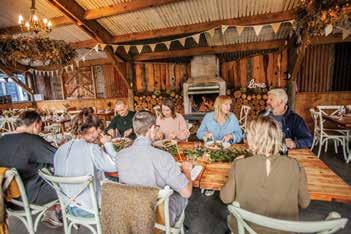

Celebrations and creating memories have always been a key part of Falls Retreat, and this will continue, be it an intimate wedding, a 50th birthday party, a team building day out or Christmas party. Change, Emma says, is never easy, but like many things in life that are hard, sometimes it’s worth it. What hasn’t changed, Emma says is “we remain passionate about what we do here and our values – taking care of people, providing amazing food made from scratch and welcoming guests with warm hospitality”.
Falls Retreat
25 Waitawheta Road, Karangahake Gorge www.fallsretreat.co.nz
The ultimate dessert experience Available every Sunday, bookings essential www.butfirstdessert.co.nz Dessert High Tea
NOURISH | FEATURE
IMAGE TRACIE HEASMAN
PAGE 11 | WWW.NOURISHMAGAZINE.CO.NZ
IMAGE BRYDIE THOMPSON
MIGHTY OAK
WORDS DENISE IRVINE | IMAGES ASHLEE DECAIRES
“Build it and they will come,” is the famous line from the movie Field of Dreams, and it seems a pretty good fit for Oak Eatery, in Morrinsville.
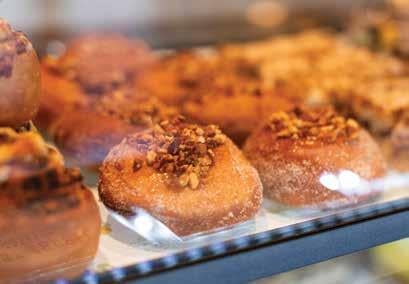
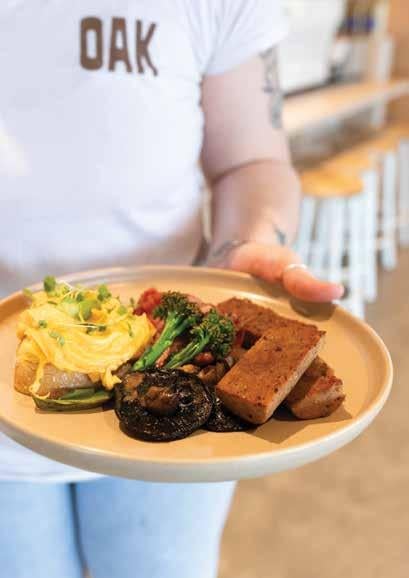


PAGE 12 | WWW.NOURISHMAGAZINE.CO.NZ
Oak is the up-to-the-minute café at the Lockerbie Estate on the northern outskirts of town, and on this blue-sky Friday morning customers are streaming in for coffee and brunch. There’s a family group at a big sunny table and others are taking the fine-day opportunity to sit out on the deck. There are parents with preschoolers, older couples having a quiet chat, a business woman heading off with a takeout coffee, all of them clearly enjoying the new “local” in their midst.
The café is framed by venerable trees, it is adjacent to a park and a children’s playground, and it is a key addition to Lockerbie, the burgeoning new Morrinsville subdivision on a former dairy farm. Nowadays, the subdivision is home to young families as well as residents of the estate’s retirement village . . . and everyone in between.
Oak Eatery opened in late May, with husband-and-wife hospo team Shane and Tash Lowe at the helm, in a business partnership with Lockerbie Estate. Shane is the former head chef of Foundation Bar at The Base, in Hamilton, and Tash was Foundation’s restaurant manager. The pair met at Foundation, married nearly five years ago, and Oak is their first venture as independent operators.
They have worked closely on the project with Lockerbie’s developers and the café’s builders. They’ve devised the food and contemporary fit-out to suit their unique park-like location and diverse customers, including Lockerbie locals, random roadtrippers, and the wider Morrinsville population. Each decision has been carefully considered, from choosing the coffee beans (Supreme) to the style of home-baking (classics with a twist).
Shane, originally from South Auckland, served his culinary apprenticeship at the prestigious Bracu Restaurant at Bombay. He began as a dish-hand, on high-school work experience: “Then the sous chef asked if I wanted a full-time job in the kitchen. So twelve, thirteen years later, here I am, still cooking.”
Tash started in hospo as a student, to fund her Bachelor of Business Studies degree at Auckland University, and she’s remained in the industry ever since. At Oak, she is multi-tasking, running frontof-house as well as taking on baking and cabinet-food duties, and some other cooking.
“We’ve put together a great new staff team,” Tash says, “but I need to step into the kitchen as needed.”
Her cabinet is fresh and colourful, everything made from scratch with the exception of gluten-free bread and sourdough. Oak makes its own light and fluffy milk bread, though, and it is the perfect vehicle for toasted sandwiches and the like. “The Cuban [toastie]
has been a big hit: pork shoulder, ham, mustard, pickles and cheese on house-made milk bread.”
There are also wraps, sausage rolls, croissants and breakfast buns with fillings and flavours tweaked each day.
Baking includes KitKat brownie, rocky road, lolly cake, Louise cake, cheese scones, oatie caramel slice and sweet scrolls. Tash says she takes her lead on these treats from Kiwi favourites and her childhood memories of home baking.
“The new twists I get are from social media and I also draw inspiration from Hamilton’s baking queen, Chrissy Houghton [from Cream Eatery in Garden Place], and cookbook writer Donna Hay.”

The breakfast and lunch menus have similar emphasis on cooking from scratch, and there is also a neatly pitched menu of kids’ treats. Shane says customer breakfast favourites include the Oak Breakfast Combo, which has a beef, cheddar and black pepper sausage plated with broccolini, bacon, confit potato, roast mushrooms, relish, toast and eggs. Banoffee crumpets also fly out of the kitchen, a sweet serving of Nutella-covered house-made crumpets with vanilla mascarpone, caramelised banana and other goodies.
For lunch, Shane’s cooking pulled lamb flatbread, wild risotto, penne alla vodka, chicken waffle burger, and bulgogi beef sandwich. His Korean-classic bulgogi, with marinated beef, pickled daikon slaw and Swiss cheese on an Oak milk-bread bun, is based on a deliciously memorable bulgogi that he and Tash enjoyed in Chicago during a recent trip to the US.
At present, Oak is open for breakfast, brunch and lunch, seven days, from 8am–3pm, and a catering service for functions is also available. By spring, Shane and Tash are looking to run some popup evening soirees at Oak, and they envisage their extensive deck will lend itself well to these events.
They’re now fully licensed, offering wine and beer lists, and they’re planning a few signature cocktails which will work with the evening pop-ups.
Oak is building its reputation very nicely, the word is spreading, and as the line from the movie says, “the customers are coming”.
Oak Eatery
105 Fairway Drive, Lockerbie Estate, Morrinsville oakeatery.co.nz


Tauranga Primary School, Fifth Ave, Tauranga www.tgafarmersmarket.org.nz Your true local farmers market. EVERY SATURDAY 7.45 AM TO 12 NOON
NOURISH | FEATURE PAGE 13 | WWW.NOURISHMAGAZINE.CO.NZ
38 Elizabeth Street, Tauranga CBD p: 07 571 0351 www.picnicka.com BAR & GRILL Open 7 Days Breakfast | Lunch | Dinner
Shell, Yeah!
Seafood lovers have been enjoying the beautiful offering at Saltwater in Mount Maunganui for nearly a year, so we asked chef Neil Sapitula to share some of his current favourite seafood recipes.
 RECIPES NEIL SAPITULA | IMAGES BRYDIE THOMPSON
RECIPES NEIL SAPITULA | IMAGES BRYDIE THOMPSON
NOURISH | RECIPES PAGE 15 | WWW.NOURISHMAGAZINE.CO.NZ
Clam Chowder
Our play on New England clam chowder and a favourite amongst New Zealanders. We use the tuatua clams, but if you can’t source these any clams will do.


500g tuatua clams
2 litres fish stock
1 litre cream
300g smoked bacon, diced
1 large or 2 small potatoes, diced
2 carrots, diced
2 stalks of celery, diced
1 red capsicum, diced
2–3 sprigs of thyme
200g butter
½ cup flour
2 cups milk
salt and pepper
Clean the tuatua, ensuring all dirt/sand is removed from the shell. Bring the fish stock to the boil, then blanch the tuatua for 3–4 minutes. Remove the tuatua from the stock, then continue to boil until the liquid has reduced by half. Add in the cream, then reduce by half again.
In a separate large pot, cook the bacon in a splash of neutral oil over a medium-high heat until the fat has rendered and it’s brown and crispy. Add in the diced potato and cook for 5 minutes. Add in the carrots, celery, capsicum and thyme sprigs and cook for a further 3 minutes. Add the butter and flour to the pot and cook, stirring, for another 3 minutes until it forms a roux. Slowly add in the milk, followed by the reduced fish stock/cream into the pot, stirring constantly. Taste the sauce and add salt and pepper as needed. Add in the cooked tuatua and bring back to a simmer before dividing between 4–6 bowls.
Kokoda
As we move into spring we get very excited that raw fish dishes come back into season and there’s none better than kokoda. The perfect dish to serve as an entrée at your dinner party. The recipe states that at the end to refrigerate for a further 10 minutes. This could be extended to a few hours to enable you to do all the work before your guests arrive and just plate when needed.
300g fresh kingfish (or any white fish)
2 lemons
pinch of salt
1 small red onion
1 green capsicum, seeds removed and finely diced
1 tomato, seeds removed and finely diced
1 small Lebanese cucumber, seeds removed and finely diced
1 red chilli, seeds removed and finely sliced
200ml coconut milk
small handful of parsley, finely chopped
2 tsp brown sugar
Dice the kingfish into small cubes and place into a non-reactive bowl. Zest and juice the lemons, then add into the bowl with the fish along with a pinch of salt. Stir to coat, then refrigerate for at least 30 minutes.
Finely slice the red onion, then place into a bowl of ice water for 2 minutes to help remove a bit of the pungency. Drain well, then add into a large bowl along with the rest of the ingredients, including the marinated fish. Stir well, then refrigerate for a further 10 minutes. We recommend serving the kokoda in cos lettuce cups.
PAGE 16 | WWW.NOURISHMAGAZINE.CO.NZ
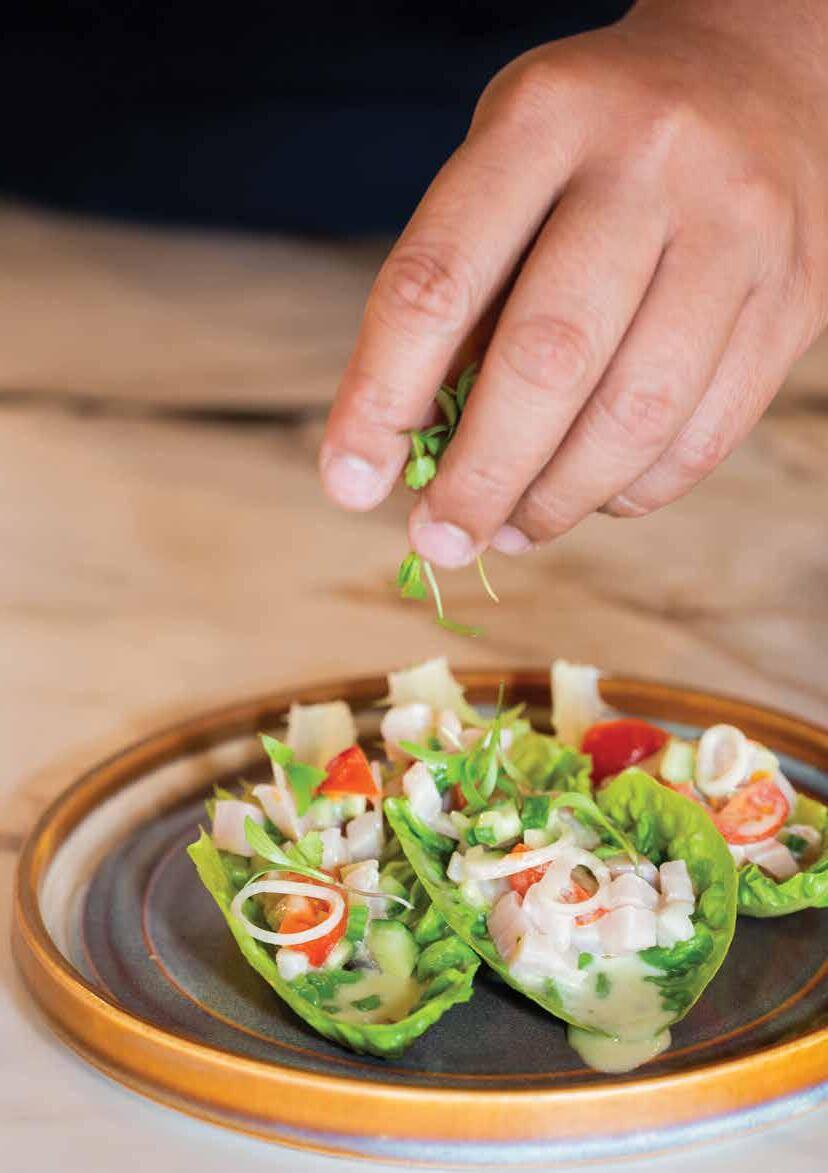
PAGE 17 | WWW.NOURISHMAGAZINE.CO.NZ
Pan Fried Flounder with Miso Butter Sauce
We love using miso in both our restaurants (Saltwater and Solera). The full flavour of umami and saltiness works well with so many different proteins and vegetables. In this recipe we have paired the miso butter sauce with a whole flounder, but this sauce will work just as well with fish fillets if whole fish isn’t for you. The miso component will also work especially well with salmon.

1 whole flounder, gutted*
1 shallot, finely chopped
3 cloves garlic, crushed
2 tbsp miso
200g butter
1–2 lemons, zest and juice
salt
¾ cup canola oil
3 tbsp flour
2 tbsp chives, finely chopped
Rinse the flounder, then pat dry with a paper towel.
In a small fry pan over a medium-high heat, melt a little knob of the butter, then add in the shallot and garlic and cook until starting to caramelise. Add in the miso paste and cook for another 2 minutes, then add in the rest of the butter. Once melted, stir in the juice of 1 lemon (reserve the zest first), taste and add more lemon or salt if needed, then take off the heat.
Heat the canola oil in a pan over a medium heat. Coat the flounder in the flour, then place it into the hot pan. Cook for 2–3 minutes each side. Once cooked through and golden, remove from the pan and drain on a paper towel lined tray. Transfer the fish to a serving plate, then top with the miso butter sauce and sprinkle with chives and lemon zest.
*If you don’t have someone able to do this at home, ask your friendly fish monger to do this for you.
Saltwater Seafood Grill & Oyster Bar
203 Maunganui Road, Mount Maunganui saltwaterseafood.co.nz
PAGE 18 | WWW.NOURISHMAGAZINE.CO.NZ
Better Together
THE UNIQUE TE KĀRORO NATURE PRECINCT UNITES TAONGA AT ROTOKAURI.

WORDS DENISE IRVINE
It doesn’t get much better than this Nourish assignment, and for a moment it’s all about food: ring-tailed lemurs at Hamilton Zoo are gently and delicately nibbling almonds and peanuts from my outstretched hands, jostling for position and treats. Their leading lady, Noelle, manages the queue in the leafy enclosure, nudging a few young ones aside. “That’s a bit bossy,” I tell her, after she has a hissy fit at a lemur who puts herself in the wrong place. It’s very hierarchical at this feeding table.
I’ve been briefed for the encounter by Mark Turner, the zoo’s curator of exotics, and Colten Marcum, a primate keeper. Colten says there are 14 females and one male in this group. They’re a nonbreeding outfit at present, and when they’re not vying for almonds the elegant Madagascar lemurs are engaged in the important business of grooming and sunbathing.
“They’ve already had breakfast,” Colten says, as he rattles the container of nuts, “but they’ll come for the treats.” The opportunity to meet and greet the lemurs is an added extra for me this morning, and a taste of things to come because such encounters will shortly be part of new packages for the public at the zoo.
NOURISH | FEATURE PAGE 19 | WWW.NOURISHMAGAZINE.CO.NZ
I’m here on a story about the development of Hamilton City Council’s Te Kāroro Nature Precinct, west of the city at Rotokauri. Planning and construction began about three years ago; the precinct was completed in several stages and officially opened just before Easter this year.
It is an ambitious project that physically connects four different places: the 25ha Hamilton Zoo, showcase for native and exotic animals; Waiwhakareke Natural Heritage Park, the country’s largest (65ha) inland ecological restoration project that is a paradise for native wildlife; Hamilton Observatory, adjacent to the zoo, operated with the assistance of the Hamilton Astronomical Society; and Everyday Eatery, the café in the contemporary new building at the zoo entrance.

My tour-leader at Te Kāroro today is Lee-Ann Jordan, director of council’s Visitor Destinations Unit, which manages the precinct. Over coffee at Everyday Eatery, just ahead of the lemur visit, Lee-Ann says that in the past, the zoo and Waiwhakareke – a few paces from each other – were co-located rather than connected. It made perfect sense for council to unite the sites, and develop and market them as a package along with neighbours Everyday Eatery (independently operated) and the observatory (community-run, on land leased from council).
The Visitor Destinations Unit also manages Waikato Museum and Hamilton Gardens, and the Te Kāroro precinct complements these popular places.
“The mission here is conservation,” she says. “The purpose is connecting people with nature. It is about experience and education. The precinct shares stories of animals and plants; past, present and future. We want people to have fun, to make a memory, to inspire them to act in some way.”

Lee-Ann says the umbrella title, Te Kāroro, honours the ancient cultural heritage of this locale and it was chosen by Te Haa o te
Whenua O Kirikiriroa, a local hapū collective that partners with council. The precinct is on a famed, unnamed walking track, a strategic pathway, thought to have been used by Tupuna Te Kāroro as a route between the west coast and Kirikiriroa, and the area is named after the reigning Chief Kāroro whose pā was on a nearby ridge now covered with suburban houses.
The $15 million Te Kāroro development includes the design, construction and fit-out of the building at the zoo’s entrance, and also new roading, car parking, and the covered walkway that links the zoo and Waiwhakareke. It’s been done in stages in the past two years, and the precinct smashed visitor numbers at Matariki Weekend (July 14–16) with around 1,500 visitors on the Friday and 2,007 visitors on the Saturday. This year’s Easter visitor numbers were also the highest recorded.
Hamilton architects Edwards White have created an impressive entrance for Te Kāroro: the low-slung veranda of the new zoo building mirrors the roof of the walkway that leads across to Waiwhakareke, the design inspired by the outstretched wings of the kākā, the native parrots that once flourished in the area. The earthy red and green colours of the roof linings match the underwings of kākā.
There are also sturdy pou, complemented with artwork by children from local kura, a beautifully carved waharoa (archway) and a viewing tower with 360 degree views of the native forest, and wider town and country landscapes.
The Edwards White design was one of three winners in the public architecture category of the 2023 Te Kahui Waihanga New Zealand Institute of Architects Bay of Plenty and Waikato Awards, announced in June. Hamilton Mayor, Paula Southgate, has commended all involved with the project. “It is a stunning and top-class addition to our visitor offering and it’s wonderful to see it formally recognised with this win.”
Lee-Ann Jordan says although the precinct now physically unites the spaces and places, each has its own strong identity. “The zoo and observatory are more curated experiences, Waiwhakareke has self-guided walks. But they’re better together.”
There’s a strong sense of connection as we exit the zoo and head across the boardwalk to Waiwhakareke. We’ve said goodbye to exotic and native animals and birds in the lush zoo, and in a couple of minutes we’re in lush vegetation of a different kind, on a wellmaintained pathway with a flirty little piwakawaka for company.
Ken Millwood, Hamilton Zoo’s education team leader, joins us on the Waiwhakareke walk; he and Lee-Ann recount the history of this council-owned former farmland that has been transformed over almost 20 years into a stunning green oasis that aims to represent the major vegetation types once found in the area.
PAGE 20 | WWW.NOURISHMAGAZINE.CO.NZ
The Waiwhakareke restoration was originally community led and council supported; nowadays it is led by council, and supported by the community. About 40ha has been planted, 500,000 trees in total, in five different ecological areas. Water quality in the reserve’s lake has vastly improved, natural regeneration is beginning to take place, and five wild kākā have been seen. There is also the possibility of a predator-free fence being built to further safeguard the precious flora and fauna.
Lee-Ann points to the uniqueness of Te Kāroro: “We can’t find another example of such integration of an indigenous ecological restoration project with a modern zoo.”



The uniqueness is echoed by Professor Bruce Clarkson, who chairs the Waiwhakareke Advisory Group, and was on the ground-floor of the restoration two decades earlier. He always knew an integrated approach would be beneficial. “There is a natural synergy between the zoo and Waiwhakareke, a sharing of expertise, a total systems approach.”
He says international reviewers who visited Hamilton Zoo and Waiwhakareke during an earlier council review said they’d never seen any other place in the world where the integration was so obvious and worthwhile: ecosystems from the other side of the world across the road from natural ecosystems.

Bruce Clarkson says in the beginning, Waiwhakareke seemed like a “100 year project” and he’s been amazed by the extent of the forest’s vigorous, healthy growth.


Lee-Ann Jordan says there’s something at Te Kāroro for everyone, “education, research, relaxation, and amazing opportunities for kids to explore”.
Note to self: next time the grandkids are in Hamilton, bring them to meet the lemurs and sample the other delights.

112 Tara Rd, Papamoa p (07) 542-0190 www.pacificapapamoa.com A Destination Completely revamped - come and experience us!
Denise Irvine
Denise Irvine is a born-and-bred Waikato journalist and foodwriter. Her work frequently showcases the region's talented chefs and food producers; she says we have the best of the
PAGE 21 | WWW.NOURISHMAGAZINE.CO.NZ
Te Kāroro Nature Precinct Brymer Road, Hamilton
ALL THE WAY TO

MEXICO



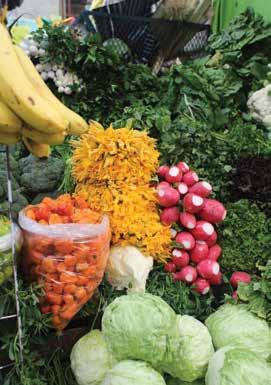

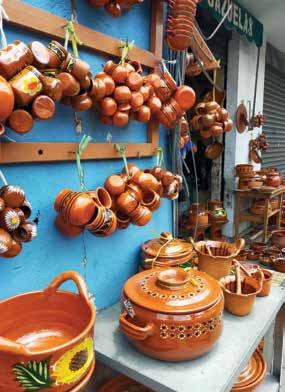
& IMAGES VICKI RAVLICH-HORAN
WORDS
It’s a destination that has long been on my wish list, but when asked why this was, I couldn’t really say. I can now! Warm and friendly people, a long and rich history, gorgeous colours and architecture, stunning beaches and amazing nature, not to mention the food, all come to mind.

My education on Mexico began before we departed as I started planning our trip. Armed with a list of places I wanted to visit, I soon discovered how vast this country is. If you’re a numbers person, it is just under 2 million square kilometres, with a coastline stretching nearly 10,000 kms. It’s bigger than Texas – 190% bigger, in fact! The thirteenth largest country in the world, it has a population of 126 million people.
PUEBLA
This gorgeous baroque style city is famous for its mole and pottery. We had just three nights here but could have easily spent over a week. Mexico’s fifth largest city felt more like a town after the capital.
With just two weeks and such a lot of ground to cover, we had to narrow this visit down to some key spots. We started near the middle but what is definitely the heart of Mexico – Mexico City. Here our history lesson of the region really began as we wandered the city which was once an island, ruled by the Aztec before the Spanish conquest in 1521.
Between tacos we marvelled at the architecture and tried to take in as many of the tales as we could from the brutal indiscriminate human sacrifices of the Aztecs to the Mexican version of the Virgin Mary.
TEOTIHUACAN
Leaving the metropolis of Mexico City, we were heading to Puebla, but on the way took a detour to take in the wonder that is Teotihuacan. Predating the Aztecs, Teotihuacan was, at its height (between 1–500AD), the largest city in the Americas. Much of this ancient city is still being discovered, including intricate frescos. The giant pyramids dominate the archaeological site, but unlike those of Giza, the Teotihuacan pyramids are not tombs but temples and thought to be solid – or let’s just say no one has found a way inside yet.

In the capable hands of our local guide, Aleyn, we went exploring the quaint cobbled streets, venturing off the tourist track. Here we visited a traditional pottery factory, where clay is hand worked and then fired in woodfired kilns to make the distinct terracotta plates and pots you will see being used everywhere.
With a few local plates weighing down our bags, we stop by a local mole shop, bakery and tortilleria as we head to the market. Is there any better place to learn about the local food? Yellow chickens caught our attention for more than one reason. For the youngest it was their colour (they are fed on corn) and perhaps the first time she had seen a whole chicken, head and all. For the adults it was more the lack of refrigeration – imagine their food safety plan! Past the chickens we found chillies, dried and fresh, and discovered the fresh chilli has a different name when dried. There were piles of mole paste, an abundance of fresh produce and at the heart of the market our lunch spot. On the menu is cemita, a sandwich originating in Puebla. At this family-owned stall, we perch on stools with the locals to watch our sandwich being made with a beautifully crumbed chicken (or pork) schnitzel which is then loaded with shredded Oaxacan cheese, avocado, chipotles or pickled jalapeños, and papalo, a fragrant Mexican herb.
For me, one of the best things about travel is what you learn. This was very evident on a recent trip to Mexico, where I was also reminded about how little I know about this part of the world.
NOURISH | FEATURE PAGE 23 | WWW.NOURISHMAGAZINE.CO.NZ
MEXICO CITY IS SO BIG IT IS LITERALLY SINKING UNDER ITS OWN WEIGHT!
Our second day in Puebla and we headed to the nearby town of Cholula. Perched on top of what is the world’s largest pyramid is Iglesia de los Remedios, a 16th-century church built by the Spanish to commemorate the conversion of the Aztecs to Christianity. Having taken in the views and worked up an appetite, we headed to a restaurant in town dedicated to corn, the most important crop in Mexico. After we learned more about this precious crop from a family that has been growing corn for generations, we tried our hand at grinding it to make fresh tortillas before sitting down to enjoy a well-deserved meal.
Our last stop in Puebla was a visit to the amazing Talavera factory. Here, pottery is elevated to an artform, and we got a firsthand glimpse of the painstaking attention to detail that goes into each piece before having a go ourselves.
OAXACA
Oaxaca (pronounced wuh-haa-kuh) is considered the culinary capital of Mexico. Oaxaca is the most culturally diverse state in Mexico, making its culture and history as well as its food all reasons to visit.
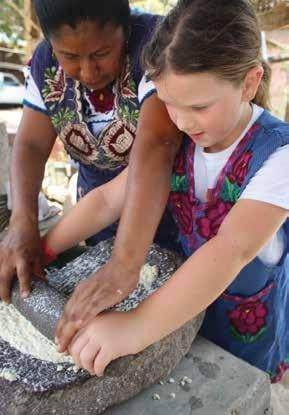

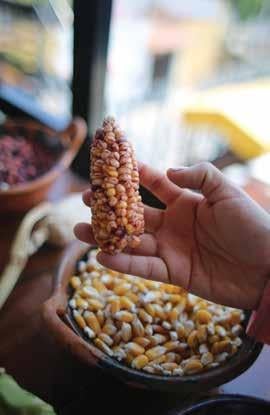
After exploring the beautiful city and its vibrant town square, which comes alive at night, we headed out into the countryside to spend a day with Dalia, a local cook. After a visit to the local market, where we saw many local women in traditional clothing selling their fresh produce, it was back to Dalia’s house to get cooking before sitting down to one of the best meals of our trip. Our menu included a simple guacamole, fresh tortillas, a beautiful soup made from squash flowers and a deliciously simple dessert made from fried plantains and cheese.
As we headed home, we stopped at a family run workshop in Teotitlan Del Valle, where traditional rugs have been weaved by the Zapotec people for centuries. A handful of families continue the tradition of weaving these intricate rugs from wool that is dyed from natural ingredients, like the cochinilla bug that can be used to make 6–7 different colours.
The next day we are back on the road heading out of town. First up, a visit to Mitla to marvel at more ancient ruins, then on to Hierve el Agua, nature’s own version of an infinity pool. On our way home we stopped to learn how the endless fields of agave we

had been driving past are turned into the famous Oaxacan spirit Mezcal before reluctantly detouring to see the Tule Tree. Tired and wanting a rest, I was “who wants to see a tree?” But trust me, it was impressive. More than 2,000 years old, it dwarfs the adjacent church. With a circumference of 54 meters, the Tule Tree has the largest girth of any tree on the planet and well worth a detour.
YUCATAN

After a hectic week or so taking in as much as we could, we were ready for some R&R beside the beach so headed south to the Yucatan Peninsula. We skipped the much talked about Chichén Itzá in favour of a day in Celestún looking for flamingos in the wild and a morning at Akmuel beach swimming with turtles in between enjoying a cocktail poolside.
And this sums up Mexico for me. In two packed weeks we experienced new tastes, walked through ancient streets, took in wonders of nature and so much more. You can’t help but love a country that offers so much, and I can’t wait to go back!
Keen to experience Mexico for yourself?
Join me next March for our small group Taste of Mexico tour. Email vicki@nourishmagazine.co.nz for more details.
PAGE 24 | WWW.NOURISHMAGAZINE.CO.NZ
A TASTE OF MEXICO

NOURISH | RECIPES PAGE 25 | WWW.NOURISHMAGAZINE.CO.NZ
RECIPES VICKI RAVLICH-HORAN | IMAGES ASHLEE DECAIRES
LAMB BARBACOA
Barbacoa is a traditional way of slow cooking meat in an underground oven. Mutton, lamb and goat are traditional, although beef is also popular. The meat is wrapped in large leaves from the agave plant or banana palm then topped with the animal’s stomach and organs. The result is melt in the mouth pulled meat. Despite the rustic ingredients, appearance and preparation, barbacoa is considered a delicacy and a treat or special-occasion food. This version brings together the essence of barbacoa for a twist on your Kiwi Sunday roast lamb.
1 onion, sliced
4 garlic cloves, peeled
4 bay leaves
100g tin chipotle peppers in adobo sauce (available at Vetro)
1 lamb leg
2 tbsp ground cumin
1 tbsp dried oregano
1 tsp salt
½ tsp white pepper
2½ cups beef stock
¼ cup fresh lime juice

Peel and slice the onion and place on the bottom of a roasting dish along with the garlic gloves, bay leaves and tin of chipotle peppers. Place the lamb leg on top.
Mix the cumin, oregano, salt and white pepper together and rub over the lamb leg.
Pour the stock and lime juice into the baking tray before covering with foil and roasting at 160°C for 6–7 hours.
Once cooked, allow the lamb to rest for 30 minutes before cutting/ shredding the meat and mixing with the soft onions and cooking juices. Serve in warm tortillas with refired beans, salsa, guacamole and extra limes.
TOMATO SALSA
This recipe is based on a salsa we enjoyed in a restaurant overlooking the Teotihuacan pyramids. It was made in a mortar and pestle tableside. My version has two key differences: I make mine in a blender and have omitted the agave worms!
1 small red onion
4–5 large ripe tomatoes, halved olive oil
1–2 garlic cloves
1 chilli* handful of coriander squeeze of lime juice salt
Peel and halve the onion and place in an ovenproof dish along with the halved tomatoes. Drizzle with olive oil and roast at 180°C for 45 minutes.
Allow the onion and tomato to cool before placing in the blender with the garlic, chilli, coriander and lime juice. Blend and then season to taste.
*I’m a wimp when it comes to spice, so half a green chilli is usually sufficient but having said that not all chillis are the same. If you don’t have fresh chilli, pickled jalapeños will work.
REFRIED BEANS
After corn, beans are the second most common food in Mexico. Before the arrival of the Spanish, they would have been an important source of protein. Black and pinto beans are the most popular and offer the perfect counterpart to the spicy cuisine.
Refried black beans come with almost everything, from tortilla chips as a dip to tacos, tostadas, barbacoa and more, including, much to my daughter’s disgust, even your eggs in the morning.
2 tbsp oil
½ onion, finely chopped
1 clove garlic, finely chopped
1 green chilli, chopped
1 tsp cumin
the Throwaway Takeaway without


½ cup water
1 tin black beans, drained and rinsed pinch salt
In a pan heat the oil and sauté the onion, garlic, chilli and cumin until the onion is translucent. Add in the beans along with the water and bring to a simmer. Mash the beans to your desired consistency and season to taste.
the network to make waste history and enjoy your coffee on the go in a
www.makewastehistory.org
On average, almost 1,000,000 single use cups are littered or landfilled in NZ everyday!
Join
premium returnable cup Find out more at participating cafes or at
PAGE 26 | WWW.NOURISHMAGAZINE.CO.NZ
CHURROS WITH CHOCOLATE SAUCE
While not strictly Mexican, they were introduced by the Spanish where they are often served for breakfast. In Mexico they are more of a snack or dessert. In Puebla we lined up with locals at Antigua Churreria de Catedral. Here, in a kitchen the size of a disabled toilet, they churn out the freshest churros all day. We enjoyed the cinnamon sugar dusted ones with a cup of Mexican hot chocolate, lightly spiced with cinnamon. In my recreation below, I have created a cinnamon infused chocolate dipping sauce. Mexicans love cinnamon! Also introduced by the Spanish, Mexico doesn’t grow cinnamon but use it like they do, incorporating it in many dishes, from chocolates to moles and soups.
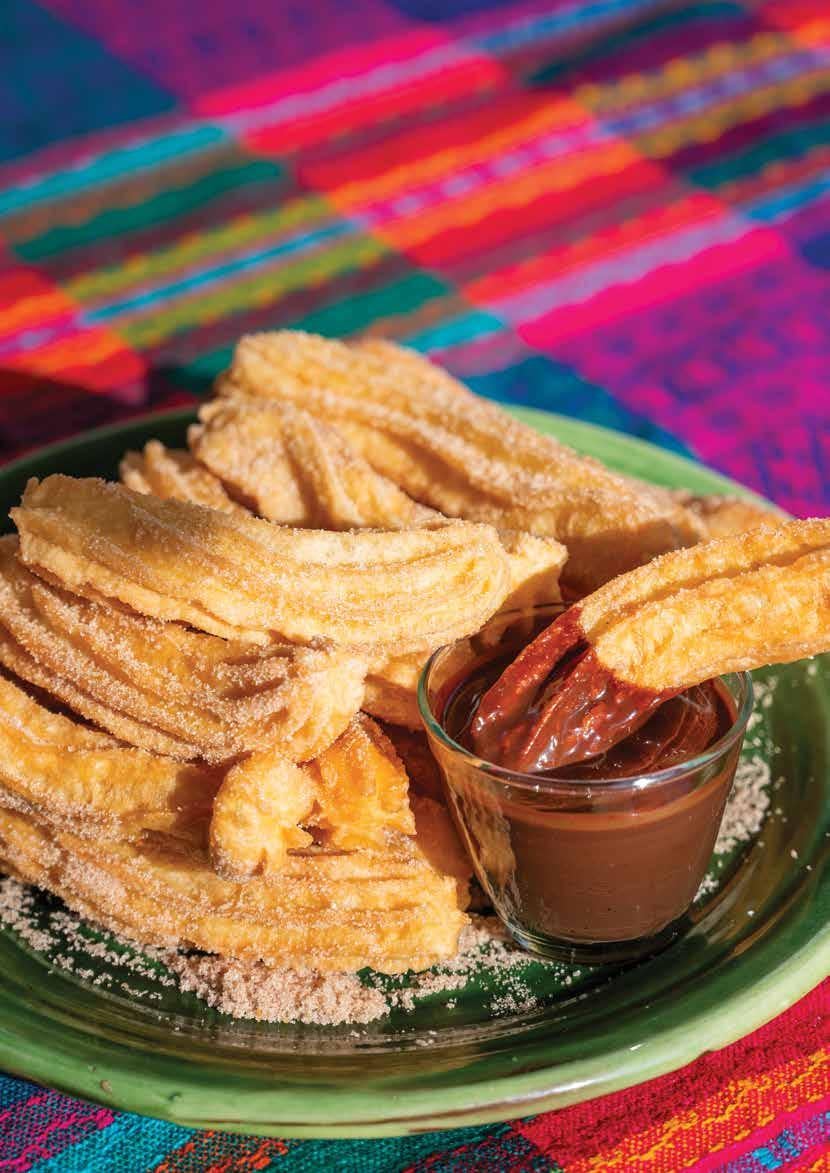
1 cup water
1 tsp vanilla extract
20g butter
1¼ cups of flour
3-4 large eggs
vegetable oil for frying
1 cup sugar
1½ tsp ground cinnamon
CHOCOLATE SAUCE
¼ cup cream
¼ cup milk
2 cinnamon quills
125g dark chocolate
Place the water, vanilla extract and butter in a saucepan and bring to the boil.
Stir in the flour all at once and mix the dough vigorously using a wooden spoon or spatula.
Remove the saucepan from the heat. Whisk 3 of the eggs together then add slowly to the dough. Keep mixing until the egg is completely integrated into the dough (I use a stand mixer for this step). In the beginning, the dough will want to separate after adding the egg but keep mixing until the ingredients are well combined and you have a smooth and soft dough that just falls off the beater. If the dough remains too thick beat the final egg and add half of this then the remaining egg if it still requires it
Place the dough in the pastry bag fitted with a star-shaped tip. Heat oil in a deep fryer or large heavy based pot to 180°C. Carefully pipe 8-10 cm of dough into the oil using a knife or scissors to cut the dough from the piping bag nozzle. Cook 4-5 at a time, depending on the size of your deep fryer.
Fry until golden brown. Remove from the oil, placing on a paper towel to drain for a few seconds, and then roll in the cinnamon sugar. To make the chocolate sauce heat the cream and milk in a small pot with the cinnamon quills. Just before it comes to a boil stir in the chocolate. Stir until the chocolate has completely melted and you have a smooth sauce.
You can make the sauce the day before and gently reheat just before serving.
PAGE 27 | WWW.NOURISHMAGAZINE.CO.NZ
BRING ON THE BASIL

WORDS LYNDA HALLINAN
In a garden, timing is everything. When I'm sowing seeds and planning what to plant for the season ahead, I sometimes feel like a Hollywood screenwriter scripting a classic rom-com.
You know the plot: girl meets boy but fate has a few curveballs to throw in their direction before love blossoms. In the movies, those curveballs tend to be interfering mother-in-laws and jealous besties, but in a garden, nefarious influences can be anything from aphids or blight to Houdini hens escaping from the chook run.
Growing food is a gamble. When your fruit trees burst into bloom after winter, it's anyone's guess whether there will be enough hardy honey bees to tickle their blossoms. When the first new season's baby potatoes are ready to dig, will there be any mint to toss into the pot or will it have succumbed to rust? And when the heirloom tomatoes you've lovingly raised from seed finally bear fruit, all bets are off as to whether your basil will have bolted.
PAGE 28 | WWW.NOURISHMAGAZINE.CO.NZ
As I write this, I have pots of bushy sweet Genovese basil –originally sown as a winter crop of microgreens – lined up along my cold, south-facing kitchen windowsill. Naturally, this accidental crop of basil will flourish out of season while the plants I tuck around my tomatoes later in summer and lavish with compost, full sun and regular irrigation will most likely be eaten by snails or succumb to mildew to spite me. Mother Nature has a mean sense of humour.
Basil (Ocimum basilicum) is a classic Mediterranean flavour, so it's no surprise that this annual herb does best in warm, sunny conditions. Unlike most Mediterranean herbs, however, basil also needs plenty of moisture, but not so much that it rots in saturated soil. Planting in pots is the best way to get a jump start on the season and ensure plenty of lush foliage for pesto and pasta sauces. Start basil seeds indoors, in trays filled with seed-raising mix, preferably on a heat pad or in a hot water cupboard, as the optimal temperature for germination is 21°C. (If you have a tiled floor with underfloor heating, lucky you: you can easily raise eggplants, tomatoes and peppers in your bathroom too.)
Mist the tiny seedlings as they emerge, and ensure they get as much sunlight as possible, along with consistent warmth. Don't take them outdoors just yet, as temperatures fluctuate wildly at this time of the year, but find the sunniest spot under cover. (I've been known to tuck my seed trays into the hatchback boot of our car on warm days, which makes for impressive growth but equally impressive grumbles from my husband about potting mix on the upholstery.)
When your seedlings have a couple of sets of leaves, carefully transplant into 10–15cm pots to grow on for a few more weeks. When watering, soak the potting mix, rather than the plant, and use liquid fertiliser diluted in warm water to boost growth. Rather than raising individual plants, I find it easier to raise basil in small clumps, nipping out the central tips of each plant to encourage compact mounds, rather than tall skinny stems.
If you grow your first crop of basil in containers then, once the weather warms up, you can follow up with successive sowings that can be transplanted directly into raised beds come summer.
BEST BASILS
For caprese salads and pesto, sow large-leafed varieties such as ‘Gustosa’ and ‘Genovese Giant’ (Kings Seeds) or ‘Emerald Towers’ (Egmont Seeds), which is slower to bolt.
‘Greek Mini’ (Kings Seeds) is little but lovely; it's my favourite for chicken club sandwiches.
For aromatic basil with a citrus twist, try ‘Mrs Burns Lemon’ (Kings Seeds) or ‘Mrs Burns Lime’ (Egmont Seeds).
If you fancy experimenting with different varieties, the Yates Seeds range includes a ‘Gourmet Mix’ of Thai, lemon, cinnamon and purple basil.
VEGEPODS
Janet from Pacifica Garden and Home Store says they love the Vegepod. “We've literally sold hundreds over the past few years and have never had any problems with the product or complaints about its usage.” These all-in-one raised garden beds come in three sizes, but Janet says, “we always recommend buying the largest size you can as you won't be disappointed.” Pacifica even put their money where their mouth is using the Vegepod to grow fresh, spray free herbs and vegetables for their café. So go and check one out at Pacifica and even taste the results at their café.

Pacifica Garden and Home Store
112 Tara Road, Papamoa
taurangafestival.co.nz

NOURISH | GARDENING
PAGE 29 | WWW.NOURISHMAGAZINE.CO.NZ
BUILDING RELATIONSHIPS BEFORE BUILDING HOMES
WORDS LIZ FRENCH | IMAGES BRYDIE THOMPSON
Since its inception in 2007, Thorne Group (TG Homes) has been a proudly family owned and operated building business, with the second generation of Thornes continuing the legacy. Their clients can’t speak highly enough of them.
Exciting, enjoyable, stress free and fun are not words normally associated with having a new home built. Yet this is exactly how the Thorne Group clients who invited Nourish magazine into their homes described the process.
Hilary and Rob moved from Auckland to retire in Omokoroa, buying an elevated section with all day sun and glorious views of Tauranga Harbour and the Kaimai Ranges. It was a tricky site to build on, yet after meeting Thorne Group’s architectural design partner, Jon McAlpine, and sending him a site plan, he quickly came up with a sketch that became the blueprint for their home. This build was the perfect example of the bespoke design process
TG Homes offers. “It was measured to within a millimetre of its life,” Hilary says, laughing, drawing attention to recesses for special furniture, windows framing views and admitting breezes, stacking doors opening up an entire corner to covered outdoor living, storage galore … all in a flexible layout that works equally well when it’s just them or when grandchildren descend. They moved into their new home over a year ago and there is nothing they would change.
Keen golfers, Sue and Daryl, also from Auckland, had owned their beautiful site overlooking the Omokoroa Golf Course for a couple of years when they admired a home being built nearby by Thorne Group. Talking to locals reinforced their decision to approach them with the storyboard they had made up of features they wanted. Despite lockdown, theirs was a ten-month build and, nearly two years later, they are relishing the way they live as a couple and enjoy hosting their large family.
The judges of Master Builder House of the Year 2022 appreciated it too, awarding their home Gold in the category for new homes under $1million.
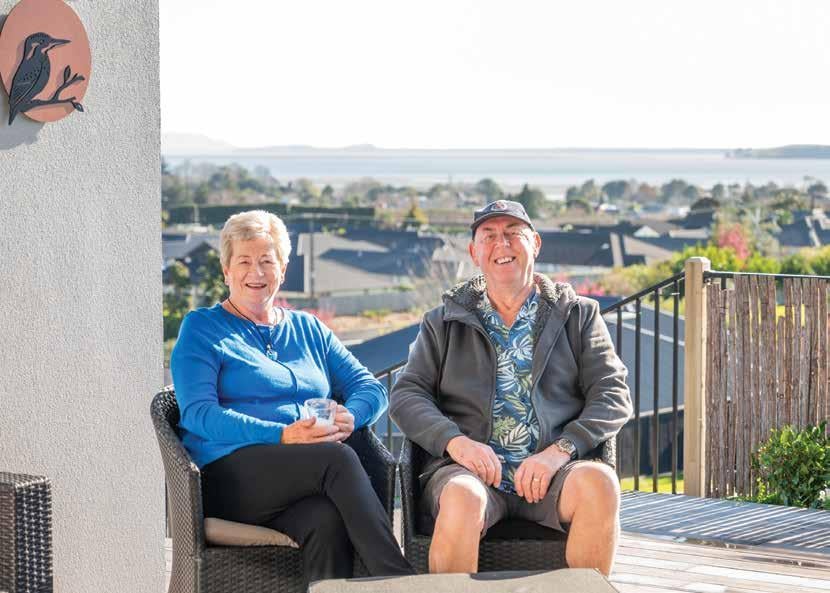
PAGE 30 | WWW.NOURISHMAGAZINE.CO.NZ
COMMUNICATION COUNTED
Both couples commended Thorne Group for their comprehensive quotes and total commitment to the outcome. Project Manager Scott Evered gets special mention for his regular site visits, attention to detail and failure to fluster. “If anything needed to be fixed or amended, the sub-contractors were on site immediately to attend to it,” Daryl pointed out, remarking that he saw this as evidence of the respect that TG Homes has earned from its tradies. Marketing Manager Lisa Buck (nee Thorne) echoes this. “The reason we have deliberately stayed local is that we know our region and have built excellent relationships with suppliers and contractors.”
Special mention also for the state of the art project management system by which Thorne Group ensures its clients have the full build schedule at their fingertips, are advised immediately of any changes, and get lots of photos so they can monitor progress, particularly useful for out of town clients, but equally advantageous in omitting any areas of doubt.
A great tool does not replace the reassurance one gets from knowing the tight knit Thorne team has your best interests at heart. Clare Sokimi, who has the reassuring title of Client Care, acknowledges, “We become very much a part of people’s lives during the planning and building of their home, so mutual trust and open communication is vital.”
Throne Group’s depth of experience and thorough research of new products ensures you get the best advice and the most efficient and attractive materials for the job. Every home build includes interior design consultation, ensuring your home reflects your own personal taste and style.
HOMES FOR TODAY’S WAY OF LIFE
In their 17 years of operation, Thorne Group have seen the evolution of home design with changes in lifestyle and generational needs. “The layout we might suggest to a family can be quite different to that for a couple whose children have left home,” Lisa explains. “We also aim to create flexible spaces that can function differently as needs evolve; for example, a teen domain which can later become a guest suite. Now that technology is so portable, a well-appointed nook can replace a separate office,
and with kitchens, such social areas, a scullery becomes almost a necessity.” Lisa points out the way window seats can provide both storage and seating while taking up so little space, to the extent that they have almost become a Thorne Group staple!
Sustainability and consciousness of environmental impacts are also top of mind for Thorne Group, with the option for clients to utilise the Homestar rating system which measures the elements that keep a home warm, dry, well-ventilated and resource efficient.

Often building companies develop a signature look. In visiting two very different homes built to the client’s personal requirements, the only commonly shared outcomes were the warm liveability, the exceptional quality in every detail, and the praise for Thorne Group as “lovely people to build with”.
Thorne Group
Showhome: 15 Montiicola Drive, Papamoa www.thornegroup.co.nz

NOURISH | FEATURE
PAGE 31 | WWW.NOURISHMAGAZINE.CO.NZ
A Fresh Experience with a Smart Caribbean Vibe
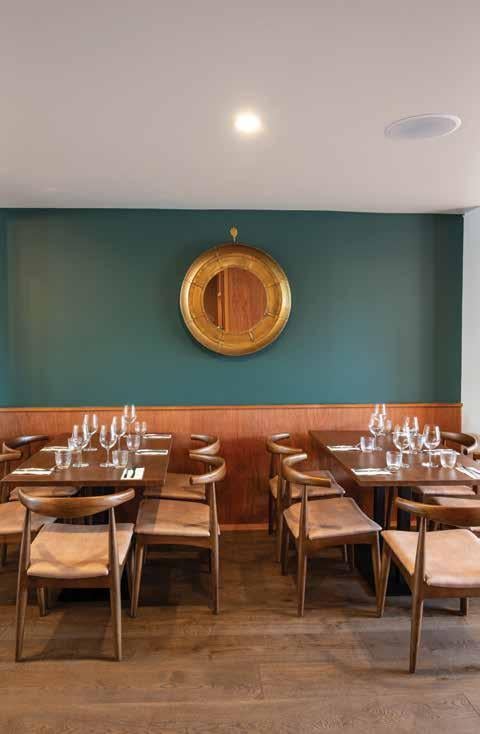

WORDS LIZ FRENCH | IMAGES BRYDIE THOMPSON

PAGE 32 | WWW.NOURISHMAGAZINE.CO.NZ
A new Mount Maunganui eatery is redolent of the Caribbean in its atmosphere and the fare it offers. Don’t expect pirates though! Sailor Galley & Rum Bar is far more sophisticated.
Imagine you are on a classic launch, the sort that would ferry the well-heeled between islands. The upholstery is leather, and oiled cedar panels are topped by creamy walls and ceiling. Sea green tiles back the bar and appear as focal points.
Then there is the engineered oak timber floor… The Oak Elegance range in colour coffee, supplied and installed by Gerrand Floorings, ensures the chocolatey theme starts at ground level.
Sailor is the brainchild of experienced hospitality couple Kimberley and Matt Hayward, who have a wealth of knowledge in the industry and own a couple of other successful establishments in Mount Maunganui.


In Sailor, Kimberley and Matt’s vision is aimed to evoke a travel inspired culinary journey while retaining that laid back feeling that personifies this beach community.
“In Sailor we are sharing our love of the beautiful seaside life of sunny days at the beach, relaxed get togethers, a friendly casualness with care and attention to detail,” explains Kimberley.
“If you are looking for a cold streetside Peroni in the evening sun, an intimate dinner, a cocktail at the bar, or an evening on the sun drenched rear deck, you will find that space at Sailor Galley & Rum Bar.”
For the Sailor fitout, Kimberley and Matt continued their commercial interiors relationship with Kate Clay, interior designer from The Room. Gerrand Floorings assisted Kate, Kimberley and Matt with just the right tone of chocolate colour for the timber flooring – not too light and not too dark – melding into an inviting interior with depth of feeling and lightness of being.
Leanne Rich from Gerrand Floorings says, “The timber brings the benefit of a warm and natural product to the fitout and, as well as being visually appealing, it allows natural bumps that are a characteristic of real timber and has a true solid timber surface wear layer allowing resurfacing if required in the future.”
As well as the timber, Gerrand Floorings provided the fit for purpose commercial vinyl to the bar staff service spaces for serviceability and functionality, so all the flooring needs were taken care of together.
INSPIRED DISHES AND RUMS FROM THE BEACHES OF THE CARIBBEAN
Executive chef of Sailor is Perrin Yates – a coup for all the Sailor clientele. Perrin revelled in the challenge of creating a menu for Sailor Galley & Rum Bar which referenced the flavours of the Caribbean (a mix of influences in itself), while capitalising on the meats, seafood and fresh produce so readily available here. “I plan to tweak the menu seasonally and whenever I am inspired by a new ingredient or combination,” he promises. We can recommend the Cuban Sandwich with the most tender pork belly or the Burnt Butter Crumpet with Blue Swimmer Crab.
It wouldn’t be the Caribbean without rum and this popular tipple anchors some cocktails and a dessert tantalisingly named Chocolate, Smoke & Rum. The international wine list and fusion menu will ensure that whether you have come for a snack and a drink or the full works, Sailor will deliver oodles of choice and some surprises.
Kimberley sums up the Sailor Galley & Rum Bar vibe: “It celebrates the adventurous spirit of the sailor, bringing together favourites from sea faring travels and expressing it in fine wines and daringly delicious dishes.”
So cruise in and drop anchor here this season! And agree it’s an innovative addition to the vibrant dining scene along the Mount’s main street.
Sailor – 107 Maunganui Road, Mt Maunganui
www.sailormount.nz
Gerrand Floorings – 123 Hewletts Road, Mt Maunganui www.gerrand.co.nz
Liz French calls her writing deeply superficial as she enjoys creating stories about interesting people, places and property, adventures and animals. Her ample spare time is spent cycling, skiing, walking, reading and haunting cafes. She’s written 35 chapters of her memoir titled “What was I thinking?”
NOURISH | FEATURE
PAGE 33 | WWW.NOURISHMAGAZINE.CO.NZ
WHAT’S HOT THIS SPRING

with Chalk & Charcoal
WORDS VICKI RAVLICH-HORAN
Wilson Trollope
PAGE 34 | WWW.NOURISHMAGAZINE.CO.NZ
Let’s face it, it’s been a long winter! Many of us are hankering for some warmer weather and this means some lighter bright clothes to match the season.
We asked the team at Chalk & Charcoal in Te Puna to give us their top picks for this season’s hot trends and what’s arriving in store over the next few months.

Fabric wise, it is about sustainability, with the more natural fabrics like linen, cotton and silk or mixes of these.
These dresses from Wilson Trollope, a New Zealand designer based in Wellington, are from the collection called Late Bloomers. These highlight the on trend colours this season, which include lilacs; greens, especially mint; pinks; orange; navy and all shades of blue.


The Wilson Trollope label is about empowering women to be their confident selves. It is done with thought, styles that flatter and materials that are considered. Designer Annabelle says, “The feeling that you get from putting on a garment that makes you look and feel great can completely transform you. We make clothes that make women feel great about themselves. Clothes that empower them to do amazing things they do in the world. We are committed to ethical and sustainable production of our garments.”
Relaxed glamour is a hot look this spring, and this navy jacket, blue patterned skirt and dress are a great example of this.
Ketze-Ke, known for their vibrant colours and striking patterns won’t disappoint this spring. Check out the detail on the black pants.
Chalk & Charcoal stock great labels like Bittermoon, Dref by D, Esmaee, Ketze-Ke, LEO + BE, Lemon Tree, Lisette, LTB Jeans, Nyne, Stella & Gemma, Wilson Trollope and more. Alongside the great range of clothes, they also have a small range of handbags and shoes, homewares, gifts and baby gifts.
Chalk & Charcoal
4 Te Puna Road, Te Puna or www.chalkandcharcoal.co.nz
NOURISH | FEATURE
Ketze-Ke
Lemon Tree
Wilson Trollope
PAGE 35 | WWW.NOURISHMAGAZINE.CO.NZ
The Legendary CARROT
Carrots are so ordinary they often get overlooked. A kitchen staple as common as milk or bread, the carrot’s fascinating history has been long forgotten. I’m here to change that – it’s time you learnt that the faithful old carrot is actually the world’s most legendary vegetable!
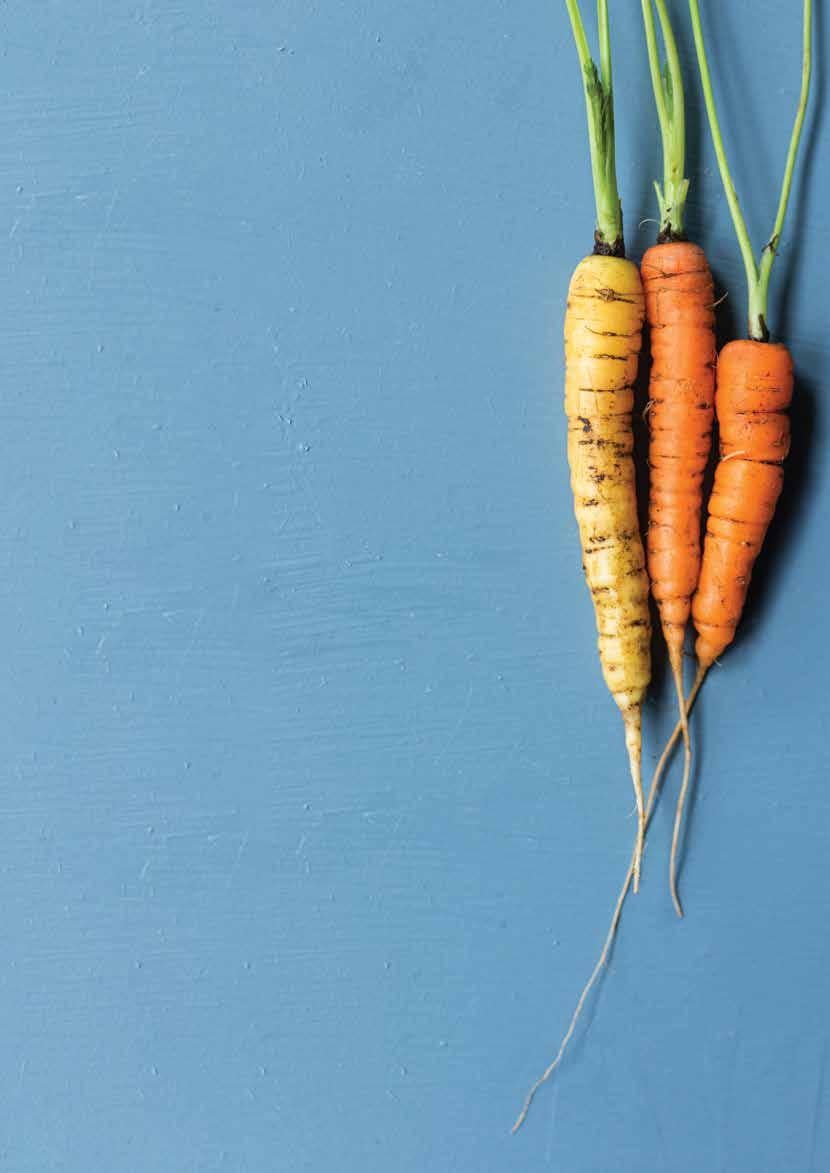
Carrots can be traced back to ancient civilisations in present-day Iran and Afghanistan, though these early varieties were likely purple or yellow and more fibrous than what we’re used to today. In the 17th century, the Netherlands developed vibrant orange carrots that were crunchy and sweet. These carrots quickly made their way around the world, and the colour orange has been inextricably linked to Dutch culture and identity ever since.
During the Second World War, British scientists used radar to detect incoming aircrafts and submarines, but to keep their technological advancement a secret, they spread the rumour that their pilots had superior night vision thanks to a diet rich in carrots. The myth might have been the greatest vegetable PR campaign in existence; to this day it seems everyone knows carrots are good for the eyes.
While carrots aren’t going to replace the need for glasses, they will support your vision, thanks to beta-carotene, the pigment that gives carrots their bright orange hue. Once it enters your body, beta-carotene is converted into vitamin A, a nutrient essential for healthy eyes (not to mention glowing skin and a strong immune system).
While they won’t actually give you radar-like vision, eating plenty of carrots can help reduce the risk of age-related muscular degeneration and cataracts. But that’s not where the health status of carrots ends; they are also an excellent source of fibre and offer a decent dose of vitamins C and K, as well as minerals potassium and manganese.
As we head into spring, there are many vegetables we are excited to see available again, but they often need to be consumed quickly before they wilt. Reliable carrots, on the other hand, have an impressive shelf-life, letting the asparagus and leafy greens take centre stage as they quietly wait their turn. So long as you store them in a cool, dark place, carrots can stay fresh for weeks.
Over time the natural sugars will break down to starch, which means older carrots are better cooked than raw, but that’s not a problem since cooking carrots elevates their nutrient profile. Heat breaks down the root vegetable’s tough cell walls, making all those nutrients hidden inside easier to access.
Despite their lengthy history and mythical radar-vision status, what amazes me most about carrots is their ability to work as well in a dessert as they do in a salad. I know few people who would be game to try a broccoli biscuit or an eggplant mousse, yet nobody balks at carrot cake. Their moisture content, vibrant colour, and inherent sweetness make carrots a natural ingredient in sweet dishes, like carrot pudding, carrot muffins, or Indian halwa, and the extra hit of nutrition they offer makes indulging all the sweeter.
Rachel Hart
Hailing from Canada, Rachel has fallen in love with life in the beautiful Bay of Plenty where she is a freelance writer with a passion for healthy food. She splits her time between telling people’s stories, creating web content and experimenting in the kitchen.

NOURISH | NUTRITION
WORDS RACHEL HART
PAGE 36 | WWW.NOURISHMAGAZINE.CO.NZ
HEALTHY LOOK VIA MANUAL MYOFASCIAL RELEASE TREATMENT

“Beauty is health. Health is Beauty” – André Leon Talley
With all the new beauty and aesthetic procedures we often forget that beauty goes hand in hand with health. I believe there is nothing more beautiful at the first sight of someone than healthy glowing skin. Over the years as a massage and a skin therapist, I was lucky to get to know and use myofascial release, a very powerful technique to retain healthy beauty.
Massage therapists and body workers are using these techniques for pain management, to ease the tightness and shortness in muscles. This is why, about 10 years ago, I started to do myofascial body work to help my clients with acute or chronic pain, migraines and mobility problems. Later on, I found my passion in facial and skin treatments. I realised how amazing and exciting this treatment is in the beauty industry as well, and the instant results we can get from myofascial facial therapy. To better understand this treatment and all myofascial releasing techniques, we need to know what we are actually working with in such treatment.
Myo (muscle) – Fascia (connective tissue) – Release (releasing techniques)
Your therapist will be working on and releasing your muscles and fascia. We all know what muscles are, but what is fascia?
Fascia is a connective tissue that covers, supports and connects muscles, bones, nerves, organs and blood vessels. Fascia can also be subcutaneous, connecting just below the skin surface. Fascia is elastic and organised when healthy, looking like a spiderweb, and encases our entire body and face. Fascia actually separates body parts, gives us form and helps the body to resist mechanical stresses.
But why do we want to work on this connective tissue to remain healthy?
I mentioned already that healthy fascia is elastic and organised. It provides immune system function and fluid flow. When trauma, infection or inflammation occurs in an area, fascia loses its elasticity and can become rigid, causing abnormal cross-linking. It can result in immune system impairments and decreased lymphatic flow. As a result, it is a vicious cycle of dehydration, and as the fascia dries out it begins to stiffen. If you imagine wrinkles on skin, they are a result of stiffened fascia caused by repetitive facial movements. We can't forget that fascia connects skin to muscles, so it makes sense it begins to fall with it. Unfortunately, the ageing of fascia is happening as well as we get old. If we want to address volume loss, we must release the fascia to restore the flow – hydration is crucial in youthfulness!
Our goal with myofascial facial treatment is to release and loosen the facial fascia so that it can move more freely and fluidly. To be free from adhesions improves lymphatic flow and blood circulation so we get greater transport of oxygen, flush out toxins and metabolites, decrease swelling and get that beautiful glow to our skin. Restored production of collagen and elastin will make our skin firmer, plumped and smoother.
And as a side result, we are getting our volume, form, contours and symmetry back to our face.

Beauty
Sue Dewes & Nela Ukropcova, MPH
Sue PAGE 37 | WWW.NOURISHMAGAZINE.CO.NZ
Sue from Tranquillo Beauty in Tauranga has great advice each season to keep your skin beautiful and healthy. tranquillobeauty.co.nz
Carrots are Tops
Carrots are an underrated veg. There will not be a week that goes by that carrots aren’t in my shopping basket. Cheap and cheerful and oh so versatile, why we don’t sing their praises more often baffles me. To rectify this I decided to create some recipes that hero the wonderful carrot, and trust me, I didn’t have to dig too deep.
 RECIPES VICKI RAVLICH HORAN | IMAGES ASHLEE DECAIRES
RECIPES VICKI RAVLICH HORAN | IMAGES ASHLEE DECAIRES
PAGE 38 | WWW.NOURISHMAGAZINE.CO.NZ
Pickled Carrots
These quick and easy pickled carrots are great. We have served it here on a bao bun with a slice of pork belly. It is also nice on traditional roast meat sammies or on a platter with cheese and cured meats, adding both a pop of colour and texture.
1–2 large carrots
½ cup rice vinegar (available at Vetro)
½ cup hot water
3 tbsp sugar
1 tsp salt
2cm fresh ginger, peeled and sliced
Use a vegetable peeler to peel carrots into ribbons. You can also cut carrots into matchsticks or use pre-shredded carrots. Pack carrots tightly into a glass jar. Add 3–4 slices of ginger. In a small pot heat vinegar, water, sugar and salt. When the sugar has dissolved, pour the hot liquid over the carrots, making sure to cover them completely.
Allow to cool, then cover with jar lid and store in the fridge for up to two weeks.
Carrot Salad
A good carrot salad is a cheap and easy dish to make any time of year. This one goes beautifully with lamb koftas or barbequed meat or halloumi. Make it ahead of time, as this salad is great once it has had time for the flavours to soak in.

½ cup raisins

½ cup orange juice
2 tbsp extra virgin olive oil
1 tbsp sherry vinegar (available at Vetro)
2 tbsp sesame seeds
2 tsp cumin seeds
½ cup cashews, chopped
3 medium sized carrots, julienned or grated
1 spring onion, chopped
½ cup parsley, chopped
¼ cup coriander, chopped
½ cup mint, chopped
Soak the raisins and orange juice for at least an hour.
In a dry pan toast the sesame seeds, cumin seeds and chopped cashews until golden.
Mix the olive oil and sherry vinegar in the bottom of a large bowl. Add in the carrot along with all the other ingredients. Toss well.
FASHION ACCESSORIES GIFTS BABY

4 Te Puna Road, Te Puna
Monday to Friday 9am to 4pm
Saturday & Sunday 10am to 3pm
www.chalkandcharcoal.co.nz
NOURISH | RECIPES
PAGE 39 | WWW.NOURISHMAGAZINE.CO.NZ
Burnt Butter Spiced Carrot Loaf
Last year Harriet spent a considerable time refining the perfect carrot cake, and this inevitably meant we had to taste test many! You would think this would mean I’d be sick of the carrot cake combo, but it’s not the case.
The traditional carrot cake uses oil which, along with the carrot, makes a super moist cake. In this loaf (you could easily make it a cake), butter is used, but instead of creaming with the sugar you melt it until golden and this adds a wonderful flavour to the loaf. Add to this the subtle touch of spice, you’ll be going back for more than one slice.

200g butter, chopped
1 cup brown sugar
1 tsp cardamom
1 tsp ginger
½ tsp cinnamon
3 eggs
1½ cups self-raising flour
3 cups grated carrot (approx. 3 medium carrots)
BUTTERSCOTCH ICING
25g butter
½ cup brown sugar
¼ cream
¾ cup icing sugar
Melt the butter in a medium size pot. Once melted it will begin to foam. Allow it to do this for 5–10 minutes, stirring often until the butter is golden brown. Note the foam colour is deceptive, so you are looking for the liquid butter colour to change. Once golden, take off the heat and allow to cool for 10 minutes.
Mix the sugar and spices in a large bowl, add the eggs and, using an electric mixer, beat until pale and thick. Add the burnt butter in a slow and steady stream as you continue to beat. Fold in the flour then the carrot.
Transfer the mix to a lined loaf tin (approx. 24cm x 13 cm) and bake at 180°C for 40–50 minutes or until a skewer comes out clean.
Allow to cool before icing.
To make the icing, melt the butter and brown sugar in a small pot, then add the cream. Stir and allow to simmer for 2–3 minutes. Take off the heat and mix in the icing sugar.
Pour the icing over the cooled loaf and allow to set before slicing.
PAGE 40 | WWW.NOURISHMAGAZINE.CO.NZ
Za’atar Roasted Carrots
Roasted baby carrots, which you can pick up at the farmers market, are a favourite dish of mine. My go to is tossing them in a little olive oil and then serving with dukkha on a bed of labneh.
This recipe is a twist on this but taking more Middle Eastern flavours with the za’atar and pomegranate molasses. If you can’t get baby carrots, regular carrots cut into batons will work just as well.

500g carrots
3 tbsp olive oil
1 tsp za’atar (available at Vetro)

½ tsp ground coriander
½ tsp salt


2–3 tbsp pomegranate molasses (available at Vetro) mint for garnish


WHIPPED FETA
¼ cup Greek yoghurt
200g feta
zest of half a lemon
2–3 tbsp olive oil

pinch of salt
Drizzle the olive oil over the carrots and toss to coat. Sprinkle over the za’atar, coriander and salt and toss again.
Place the carrots on an oven tray and bake at 190°C for 20–30 minutes, depending on how thick your carrots are. You want them to be fork tender. Once cooked, drizzle over the pomegranate molasses and serve on the whipped feta, garnished with fresh mint.
To make the whipped feta, place the yoghurt, feta and lemon zest in a food processor and blend. With the motor running, slowly add in the olive oil. Check and adjust the seasoning.
07 578 1111 76a Grey Street, Tauranga www.tranquillobeauty.co.nz Your
Experts • Advanced skin treatments • Maintenance treatments • Skincare products #journeybeneathyourskin WE USE ONLY THE FINEST QUALITY SKIN PRODUCTS PAGE 41 | WWW.NOURISHMAGAZINE.CO.NZ
Local Skin
Pork Belly HARRIET’S
HOW TO

PAGE 42 | WWW.NOURISHMAGAZINE.CO.NZ
WORDS HARRIET BOUCHER | IMAGES ASHLEE DECAIRES
Pork belly is one of those special occasion meats where a lot of love goes into achieving the perfect crackle and juicy meat. It’s one of the richest meats on the market, so a little goes a long way.
If I go to a restaurant where pork belly features on the menu, I’ll often snap it up, as I hardly ever cook it at home. The perfect belly must have tender, flavoursome meat, rendered fat and, of course, epic crackling. Getting all three perfect often proves difficult, so I set out to change this.
ANNABEL LANGBEIN
Week one of pork belly testing was dedicated to Annabel Langbein’s Crispy Pork Belly from The Free Range Cook. A very simple method, you pat the scored skin dry and season it with salt and pepper. It sits in a roasting dish on top of 3 sage leaves, goes into a hot oven until the crackle forms, then milk is poured around the dish and the belly is cooked at 160°C for a further one and a half hours. Annabel suggested it would take 20–30 minutes for the crackling to form on the belly, but mine took 50 minutes, and even then, there was a patch that refused to pop. I was worried the meat would dry out, so I went ahead with the milk step.
I had expected the sage leaves to infuse into the meat, but the flavour was lost. Instead, the pork was a bit bland and almost cheesy in the bits where the milk curds had clung on. The meat itself was tender, but I think it would have been even more succulent if it had less time in the hot oven at the start. The fat had rendered down beautifully, but the crackling was a bit of a miss. The recipe only called for half a teaspoon of salt to be rubbed into the skin, which just wasn’t enough to get that salty hit I crave in crackling. Salt also helps dry the pork skin out, which is essential for it to crackle, so not enough salt just won’t cut it.
CHELSEA WINTER
Chelsea Winter, like Annabel, is a household name in New Zealand. One of her famous recipes is her Slow Cooked Pork Belly with Perfect Crackling. This is the recipe that my mum uses, and it’s always a hit. You start by patting the belly dry, rubbing olive oil all over, sprinkling the top generously with salt and massaging it in, then placing it on a wire rack, set over an oven tray and cook at 130°C. It cooks low and slow for four hours, then for 30 minutes at 150°C. I don’t understand what this extra 30 minutes at 20 degrees hotter does. Once the slow roasting is complete, the pork gets blasted on the grill setting until the skin puffs up.
Most of the skin on my piece of belly crackled impressively, but there was a small patch that just wouldn’t budge. The belly was slightly uneven and through my research, I’ve found that belly will only crackle if the skin sits at an even level. You can level the meat by simply tucking a piece of tin foil or rolled up silicone baking mat under the lower side to prop it up. The meat was bursting with the quintessential roast pork flavour but was slightly less tender than Annabel’s milk braised belly. The bits of crackle that did work were incredibly crunchy but not break your teeth tough, and just salty enough without needing to reach for a glass of water.
AMERICA’S TEST KITCHEN
In my third week of pork belly testing, I tried Dan Souza’s recipe from America’s Test Kitchen. It’s well known that Americans love their bacon, and Dan’s recipe epitomised this. To start, you cut the
piece of scored belly into thirds, then rub the flesh with a mix of half salt and half brown sugar, ensuring no sugar touches the skin. It’s flipped back over and placed in a dish, then the skin is sprinkled with salt. The belly is then dried out, uncovered, in the fridge for 24 hours. Once dried, the pork is transferred to a wire rack set over a tray and cooked low and slow at 120°C for 3–3 ½ hours until the meat is tender and the fat is rendered. The pork is then cooked in a pan of oil, skin side down until it’s evenly crunchy and crackled. To me, this seems somewhat of a cheat’s way to achieve the perfect crackle, but out of the four recipes I tried, it was the best tasting, textured and easiest to get right albeit rather messy. The meat was beautifully tender and took on a sweet-salty bacon flavour, although was a tad on the salty side. This may have been mellowed out if we served it with a sauce, but the belly should be balanced on its own.
CJ EATS
The fourth belly I tested was CJ Eats’ Cantonese-Style Crispy Pork Belly recipe. This recipe had the longest preparation time but the shortest cooking time, so I was drawn in to see whether the meat would be as tender as the others. Instead of scoring the meat, you start by pricking it with a sharp knife or fork to puncture the skin. The flesh side is cut a few centimetres deep, then marinated in a Chinese 5 spice-based paste. It’s then placed into a tin foil parcel with the skin exposed and left to dry in the fridge for 48 hours. Once dry, the skin is brushed with vinegar, topped with an egg white/salt mix to form a crust and baked at 150°C for 30 minutes. The crust is then removed, more holes are poked into the softened skin and it’s baked for a further 30–45 mins at 230°C to form the crackling.
This was the most visually stunning piece of crackling out of the four bellies I had cooked, but looks can be deceiving. It was quite a thin crackle, which meant that the top was crunchy but the bottom part of the skin was still chewy and hadn’t completely aerated, which is how you get the ultimate crunch. The fat hadn’t rendered down properly, probably due to the short cooking time, but it wasn’t a very fatty piece of belly in the first place so this was forgivable. The meat was intensely salty and had an overpowering 5 spice flavour. As expected, this belly wasn’t as tender with the short cooking time, proving low and slow is the way to go.
Each pork belly method has shaped my final recipe. I preferred the slow cooking at the start and crackle to finish when comparing Annabel’s and Chelsea’s. I loved the America’s Test Kitchen sweet/ salty marinade over CJ Eats’ 5 spice. Chelsea Winter’s crackling was all round tasty, successful and achievable, but I also liked the theory behind how the skin was prepared in CJ Eats’ recipe. So for my final recipe, I’ve marinaded the belly in a salt/sugar mix, used CJ’s method of pricking and not scoring the skin, dried the skin out with the boiling water method I use at home and based the cooking on Chelsea’s recipe.
Harriet Boucher
Harriet is a Waikato born and raised foodie. She is a chef by trade and has worked in a few popular cafes and restaurants around Hamilton. When she isn’t whipping up treats, you can find her enjoying a walk along the river or dining at her favourite local eateries.

NOURISH | FEATURE PAGE 43 | WWW.NOURISHMAGAZINE.CO.NZ

PAGE 44 | WWW.NOURISHMAGAZINE.CO.NZ
THE ULTIMATE PORK BELLY
Pork belly is so worth the effort, which is why this recipe isn’t a quick cheat method. Take the time to impart flavour into the flesh and give the skin the best foundation to crackle. Serve pork belly with an apple and fennel slaw, a celeriac puree and seasonal greens.
1kg unscored pork belly
3 tbsp brown sugar
1 tbsp fine sea salt
extra sea salt
Place the pork belly on a flat surface, then using a sharp knife, prick the skin all over to create little holes. Don’t stab into the flesh, just the skin.
Boil the jug, set a wire rack over the sink and place the pricked belly skin side up on the rack. Pour boiling water over the skin, you will notice it tighten and lighten.

Mix the brown sugar and salt together, then flip the pork over and rub this mix into the flesh, taking care to not get it on the skin. Place the belly in a dish, skin side up, and rub a little extra sea salt into the skin. Place the pork, uncovered, into the fridge overnight so the skin dries out and the flesh cures in the sugar/salt mix.
The next day, preheat the oven to 130°C. Place the pork on a wire rack set over an oven tray and cook for 3½ hours. Turn the oven setting to grill at about 200–220°C (some oven grills are more vicious than others). Move the pork to the top half of the oven, and grill until the skin crackles all over. WATCH THIS CAREFULLY, it can burn in minutes if your oven is too hot. It happens to the best of us, myself included in this very picture, but I cut the burnt part off so you wouldn’t know.
Allow the meat to rest for 5–10 minutes once the crackling has formed before slicing and serving.
TIP: Before you turn the oven to the grill setting, check that the pork is level. If it isn’t, prop the thinner part up with a piece of tin foil to even it out. This will help it crackle evenly.
NOURISH | RECIPE
PAGE 45 | WWW.NOURISHMAGAZINE.CO.NZ
“You get a real sense of family when you choose Thorne Group and we’re so, so happy that we entrusted them with the design and build of our new home.”




HILARY & ROB



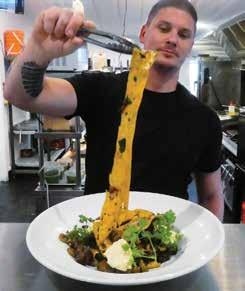

15E Minden Road, Te Puna | P. 07 552 4443 Tues - Sun 12 noon - 9.30pm | whitehousetepuna.com Your local destination FOR GREAT FOOD & COCKTAILS CORPORATE LUNCH & DINNERS AVAILABLE BUILDING RELATIONSHIPS & CREATING AWARD WINNING HOMES TAKE THE THORNE GROUP JOURNEY TOWARDS THE HOME OF YOUR DREAMS. www.thornegroup.co.nz OR VISIT OUR AWARD-WINNING SHOWHOME AT 15 Montiicola Drive, Papamoa

WORDS VICKI RAVLICH-HORAN | IMAGES BRYDIE THOMPSON
NOURISH | RECIPES PAGE 47 | WWW.NOURISHMAGAZINE.CO.NZ
Are Gifted Like These
Sweet Things
Nothing shows you care more than a handmade gift, even more so if that handmade gift is delicious.
A jar of dukkah or our herb salt (both recipes can be found in our latest cookbook) are always handy to have on hand if going to someone’s for dinner or needing to say thank you. Here are a couple of our favourite sweet ways to say thank you.
CHOC ALMOND COOKIE JAR
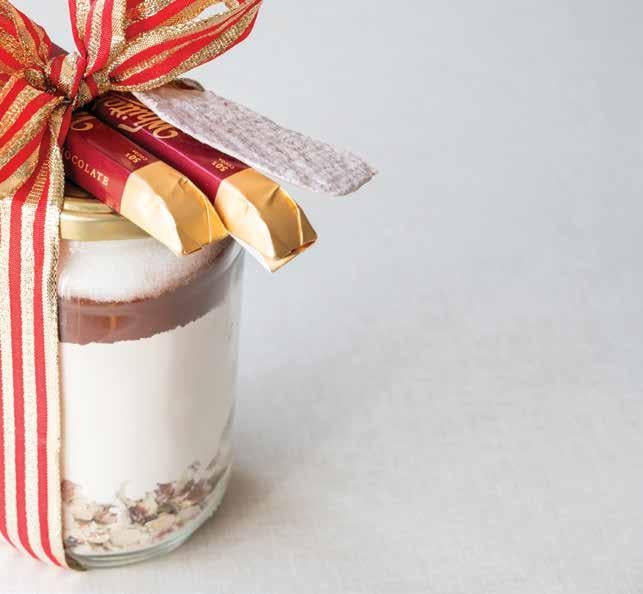
The recipient of this jar of joy only needs 200g of butter to make a fresh batch of choc almond cookies. Another bonus of this recipe is it makes use of those jars you have been saving – a 850g jar is perfect and happens to be the size of Vetro’s range of Greek peaches.
IN A CLEAN DRY JAR LAYER IN THE FOLLOWING:
1 cup almond slices - you can replace the almonds with coconut for a slightly cheaper version
½ cup sugar
1¼ cups flour
1 tsp baking powder
¼ cup cocoa
Place a lid on and tie a bow around two dark chocolate Sante Bars (or 100g of chocolate) with a card containing the following instructions:
MAKES 12–14 COOKIES
Melt 175g of butter. Add the contents of the jar and stir well. Roll into golf ball size cookies, flattening them slightly as you place them on a lined baking tray.
Bake at 180oC for 15 minutes.
Once cool ice with ganache made from melting 25g of butter with 100g of chocolate.
CARAMEL POPCORN CASHEW BRITTLE

This recipe comes with a warning – it’s highly addictive! We recommend making a double batch, one to give and one to reward yourself for being so giving.
While it keeps fresh up to two weeks in an airtight container, we also advise giving it away as soon as you have finished making and packaging. Trust us, the temptation is real.
You need a candy thermometer for this recipe. Find these at Simply Divine Kitchens.
100g butter
1¼ cups sugar
1 tsp vanilla extract
¼ tsp baking soda
3 cups of popped popcorn*
½ cup roasted and salted cashews, roughly chopped
Place the butter and sugar in a large pot. Heat and stir to melt the butter then allow it to bubble away until the mixture reaches hard candy stage or 180°C on a candy thermometer.
Turn off the heat and mix in the vanilla, baking soda and then the popcorn and cashews.
Carefully pour onto a lined baking tray and spread out. Allow to cool completely before breaking into pieces and placing into airtight jars.
*I used store bought lightly salted popcorn. If popping your own, add in a pinch or two of good sea salt, like Opito Bay Salt, when mixing in the popcorn.
PAGE 48 | WWW.NOURISHMAGAZINE.CO.NZ
SEED CARDS
When I was a kid I loved making paper. This pared down version allows you to make really rustic recycled paper cards without the need for any special equipment. The addition of seeds into the paper before it dries allows the recipient to continue your recycling efforts by planting the card and having the seeds offer another gift for them to enjoy.
YOU WILL NEED:
Paper – we have a paper-only collection bin in the office and ripping up the bills is really cathartic! Using or adding in some colourful gift wrapping paper (yes I am that person at parties who whips the paper away after the gift has been unwrapped to use again) will give your cards an alternative shade to the grey of bills.
A large container
Water
Blender
Chux cloths or similar
An old towel or a dish draining mat (just not a silicon one)
Rolling pin
Seeds – a wild flower mix is great, or for a more edible theme microgreen or salad mix seeds are also good.
Shred the paper into small pieces and place into a large container, covering with water. I used a 3 litre container and half filled this with torn paper before covering with water.
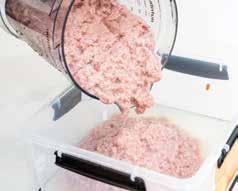

Leave to soak over night before placing in a blender, adding more water if needed. This will depend on how big and/or powerful your blender is. Lay your towel down on the work surface. Lay a Chux cloth on the towel. Scoop out some of the paper pulp and spread this over the Chux cloth as thinly and evenly as possibly. Sprinkle over the seeds.
Lay a second Chux cloth on top and use the rolling pin to roll out the excess water and roll the paper as thin as possible. Once you have got rid of as much water as possible, remove the top Chux cloth and lay the sheet of fresh paper in a sunny spot to dry out and repeat with remaining paper pulp to make more sheets.
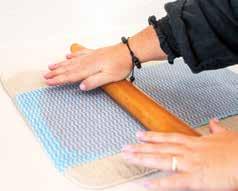
When the paper is completely dry, remove from the Chux cloth and cut to the desired shape.
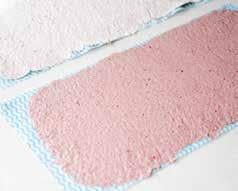



PAGE 49 | WWW.NOURISHMAGAZINE.CO.NZ

PAGE 50 | WWW.NOURISHMAGAZINE.CO.NZ
CULTURED
FROM CHEDDAR DAYS TO A CHEESY THREE-WAY
RECIPES & IMAGES FIONA HUGUES
Until I met my husband, embarrassingly I was pretty much solely a basic cheddar cheese farm girl – give me fat yellow slices, a jar of pickled onions, some thick buttered bread to eat it with and I was perfectly happy. Back then, bad waxy Camembert gave me the icks and the rancid smell of those tinfoil wrapped blue cheese wedges made me gag. These days though, after the relaxation of raw milk cheese importation and a couple of intercultural married decades of intense immersive fromage therapy, I’m gleefully a certified connoisseur of all things cheesy (well, most things, some of the rather rankly pungent French chevres my love adores will not make it within a mile nor a goat’s whisker of my side plate).
You can take the country girl out of the Waikato but not the Waikato dairy adoration out of the girl, and if you’ve followed me for a while, you will know I passionately champion all things milk and creamy by including them in many of my dishes, particularly the savoury ones. These are three of my go-to cheesy recipes for sharing now, especially when the weather’s as fickle as it is these days and has still got some bite to match.
BOUGIE BBQ BRIE
This, my friends, is the perfect dish for sitting out under the stars, rugged up around a fire or BBQ, welcoming in the new season. Easily made in a cast iron pan on the BBQ or in the oven, it transforms even the waxiest, most unripe Brie into unadulterated delight – I’ve added roasted fruit and candied walnuts because we eat it as a sort of sweet savoury dessert, but it also makes a damn fine appetiser for guests to dig into at parties.
1 whole Brie, or 2 stacked a bunch of seedless grapes, cut into smaller bunches
2 pears, halved

olive oil for drizzling
¼ cup or so of runny honey, plus extra or fresh honeycomb to serve small handful of walnuts, halved, or whole almonds a few sprigs of fresh thyme
sea salt & freshly ground black pepper

crostini, thinly sliced baguette or good quality water crackers to serve
Place your pears and grape bunches on a lined tray and drizzle with a little olive oil and sprinkle with a little salt. Bake at 190°C fan bake for around 15 minutes until slightly softened and beginning to golden and blister.
The day I shot this it was raining, so I just baked my Brie on a piece of baking paper on a tray in the oven at 180°C for 10 minutes, but placing them in a cast-iron pan on a grill rack in a BBQ and closing the lid works just as well on a balmy day.
When ready to eat, drizzle your brie with olive oil and season with salt and pepper. Throw on the nuts and tuck a few grape bunches around. Scatter over the thyme and drizzle the lot with honey.
Bake as above or grill on medium heat under the hood of your BBQ until the cheese is warmed through and feels melted and gooey in the middle, around 10–15 minutes depending on your BBQ.
Tuck in the baked pears, drizzle over more honey if needed and a shower of sea salt.
Devour immediately whilst the cheese is warm and oozy.
NOURISH | RECIPES PAGE 51 | WWW.NOURISHMAGAZINE.CO.NZ
FAUX ROQUEFORT TERRINE
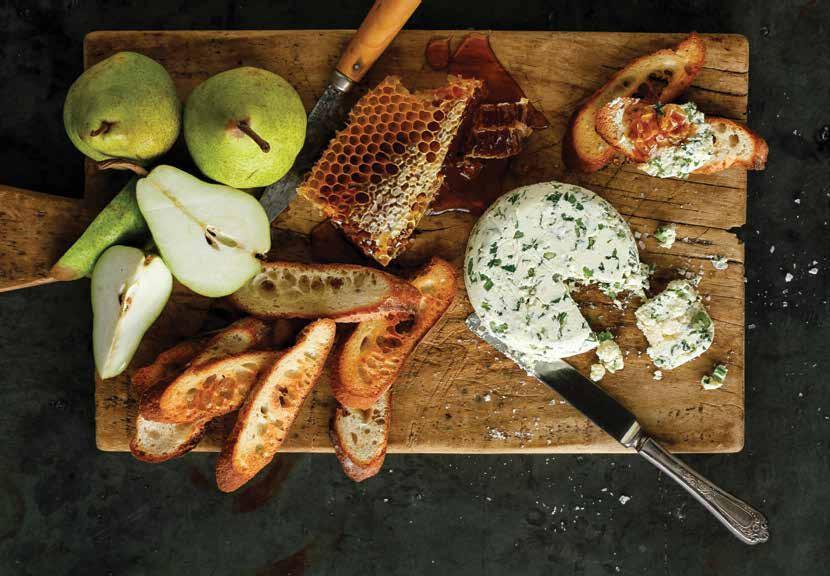
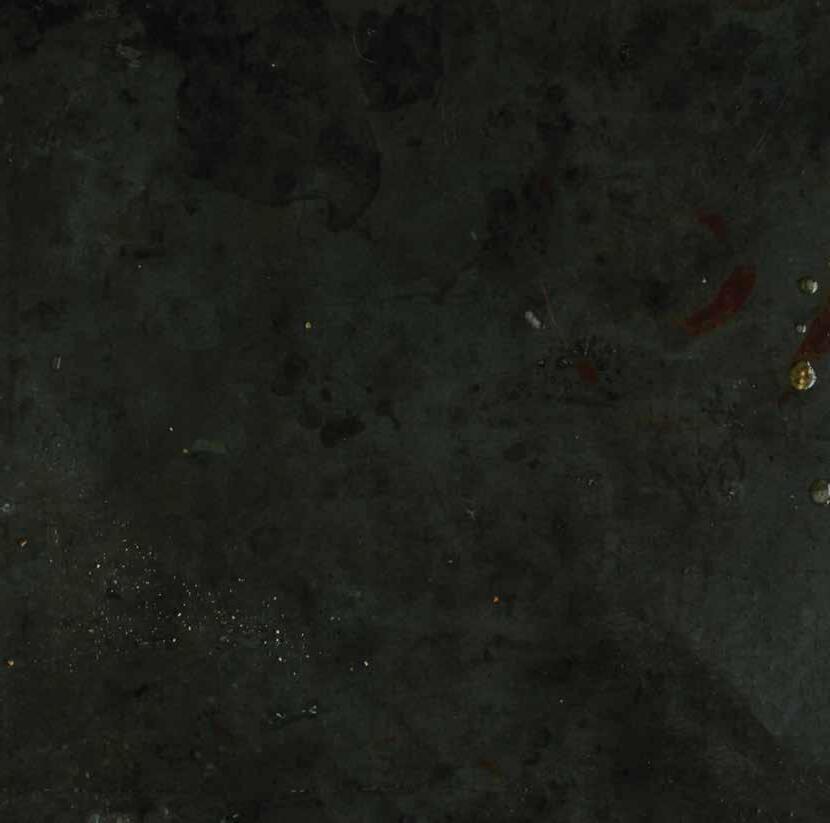
Look at me all brave and eating blue cheese! To be fair this dish doesn’t scream the pongy blue of old, mainly because I’ve toned it down a tad with cream cheese, but it still has wonderful depth, and added celery gives these little terrines unctuous springtime crunch. By all means use Roquefort or Stilton if you wish, but honestly those blue cheese masterworks should really be left unsullied, so I prefer to keep the blue I use for these to local and low key supermarket varieties. Simple to make, with only a handful of ingredients, they can easily be made days ahead and kept in the fridge, so make a few for those times you need bougie snacks in a hurry. Serve on boards with crackers or croutons at apéritif hour, with whatever crisp seasonal fruit you have handy and some fresh comb or honey for drizzling. Recipe easily halves for date night or doubles to serve a crowd.
2 x 100g wedges blue cheese
250g cream cheese, softened 100g butter, softened 2–3 sticks of celery, finely chopped (around 1 cup)
3 tbsp chives, finely chopped sea salt & freshly ground black pepper
Line the base of two 10cm springform tins (you can find them at Kmart) or a small loaf tin, with clingfilm.
Combine the cream cheese and butter with a fork until smooth and stir in the celery and chives until incorporated. Taste and season if necessary.
Divide the celery mixture in half and spread one part on the base of your tins. Crumble the blue cheese on top to make a layer. Smooth over the rest of the celery mixture and press down to make an even kind of cake. Cover with clingfilm and refrigerate for a few hours until firm.
Invert onto a board when ready to serve. Will easily keep in the fridge for a week.

TO BREW
LEARN
BREWING, CUPPING & BARISTA COURSES AVAILABLE PAGE 52 | WWW.NOURISHMAGAZINE.CO.NZ
www.excelso.co.nz info@excelso.co.nz
TARTIFLETTE
(pron /tart-ee-flett]/ - a French melty cheese, onion, spud & bacon situation)
This is a bistro classic from the French Alps that my consort grew up with, eaten particularly around spring ski season when the days are sunny but you need something filling to banish the chilly nip. Insanely delicious, it’s pretty much a posh French version of mac and cheese but made with spuds and jazzed up with a splash of wine and much fancier cheese.
Make it in an ovenproof dish or oven-safe pan and serve direct to the table. I serve it with piquant cornichons and well-dressed crunchy leaves on the side.
approx. 750g small potatoes
6 or so slices dry cured streaky bacon, roughly chopped
1 large brown onion, sliced.
3 shallots, peeled and halved
1 tbsp butter for cooking
¹�³ cup white wine
²�³ cup fresh cream
200g (or more) of cheese – I used sliced Emmental, but any combination of melting cheese works well (slices of Camembert or Brie tucked in is worth a go too)
sea salt & freshly ground black pepper

Boil the potatoes in salted water until tender when pierced with a knife.
Traditionally this dish is made with lardons, little cubes of bacon, but they’re difficult to find here, so I just use decent dry cured bacon. In a fry pan over medium heat with a little butter, cook the bacon until it’s golden and fragrant. Set aside and add the onions and shallots to the bacon fat and cook them until softened.
Preheat oven to 200°C fan bake.
Butter the sides of your baking dish or pan. Slice the potatoes thickly and place them in the dish intermittently with the onions, shallots, bacon and cheese. Combine the wine and cream and drizzle over the lot. Lightly season with salt and pepper. Bake for 12–15 minutes until golden.

Rest for 5 minutes before serving.
To Serve – a salad of buttercrunch or baby cos leaves dressed with 1tbsp seed mustard shaken together with 2 tbsp white wine vinegar and 4 tbsp olive oil with some baby gherkins or cornichons on the side.
Fiona Hugues
Award winning food stylist, designer & creative multi-hyphenate Fiona Hugues spent her childhood gallivanting around the Waikato countryside on horse back. After Hillcrest High School, Elam School of Fine Arts took her to Auckland where she has lived ever since and now resides on a rural property with her French husband, their three children & a plethora of animals. She’s an entertaining expert, sourdough coach, art director and gourmand and it’s said in dire circumstances she would possibly trade one of her children for a bottle of Pinot Grigio & a good burrata.

PAGE 53 | WWW.NOURISHMAGAZINE.CO.NZ
HAPPILY AVO AFTER
Happiness is a perfectly ripe avocado. Just act quick to seize the moment! Both of these recipes are easy to pull together next time you have a perfect avocado on your hands and fancy more than toast or guacamole. I’ll be enjoying both on repeat as we head into the warmer months.
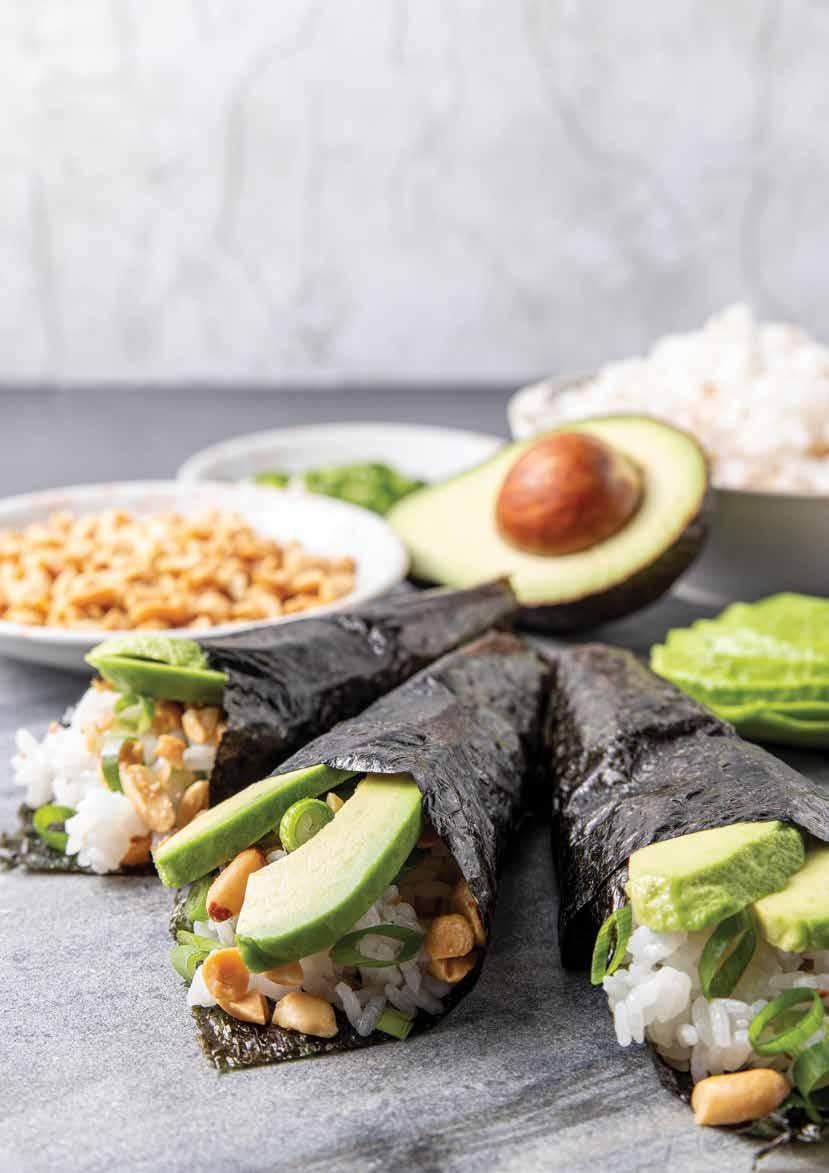
PAGE 54 | WWW.NOURISHMAGAZINE.CO.NZ
RECIPES & IMAGES AMBER BREMNER
AVOCADO AND PEANUT SUSHI HAND ROLLS
Sushi hand rolls (or temaki sushi) are basically a rolled cone of seaweed, wrapped around rice and fillings. Once the rice is made they’re very quick and easy to make (much less faff then making traditional sushi rolls at home), child friendly and a bit of fun. We serve the components family style and everyone builds their own, to suit their appetite. Slices of perfectly ripe avocado, chopped peanuts and a little sliced spring onion is a favourite filling, and I like to add a squirt of Kewpie mayo, sriracha, or both. Thinly sliced vegetables, sprouts or marinated tofu or tempeh strips are also excellent filling options.
1½ cups sushi rice (available at Vetro)
2 tbsp rice vinegar


1 tbsp sugar
½ tsp salt
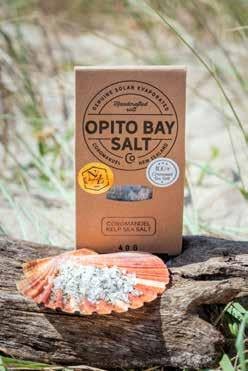
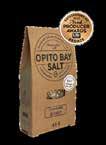



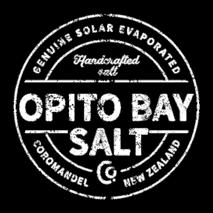
1 tbsp sesame seeds
1 pack of nori sheets (available at Vetro)
1–2 avocados (depending on size), peeled and sliced ½ cup roasted peanuts, roughly chopped
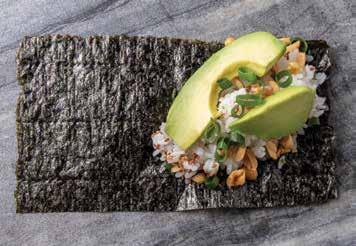
1–2 spring onions, thinly sliced
To serve: Your choice of Kewpie mayonnaise, sriracha chilli sauce, soy sauce
Wash sushi rice well and cook according to packet directions. While the rice is cooking, combine rice vinegar, sugar and salt in a small dish and stir to combine. Pop it in the microwave for 30 seconds to warm and fully dissolve the sugar and salt. (You can do this in a pot on your stovetop if you prefer).
Toast sesame seeds in a dry frying pan over medium heat, stirring often, until golden brown.
When the rice is cooked let it stand, off the heat, covered, for 15 minutes. Spread rice on a wide tray or baking dish and sprinkle with the vinegar mixture and toasted sesame seeds. Gently stir to combine, using a chopping and turning motion so you don’t mash the rice. Allow to cool before making sushi hand rolls.
When you’re ready to eat, use kitchen scissors to cut nori sheets in half (to form rectangles). Assemble about ¼ cup of sushi rice diagonally on one half of the nori rectangle. Top with peanuts, avocado and spring onion. Add a squirt of sauce, if using. To form into a cone, bring the bottom right corner up towards the top centre, then firmly wrap the left hand side around to form a cone shape. I find it easiest to build the cone with the nori sitting on my hand, rather than on a plate. If you’re stuck, try looking up temaki hand roll technique on YouTube. These are best eaten fresh, while the nori is crisp.
1 2 3 NOURISH | RECIPES Taste the Coromandel Multi-award winning 100% natural Coromandel sea salt. Shop on-line Use code NOURISH10 for 10% off your first order www opitobaysalt co nz PAGE 55 | WWW.NOURISHMAGAZINE.CO.NZ
AVOCADO AND BROAD BEAN PANZANELLA

This loose interpretation of panzanella (Italian bread salad) is my idea of spring on a plate, though I’d be delighted to eat it any time of year. Toasted cubes of sourdough are tossed with chunks of avocado, podded broad beans, spring onions, salad greens (I used pea tendrils from Kaimai Greens) and a white balsamic and caper vinaigrette. This salad is refreshingly light, bright and tangy, yet surprisingly substantial as a light meal or side dish.
4 thick slices of sourdough (or other good quality bread)
olive oil to spray or brush
1 avocado, peeled and chopped into chunks
2 cups broad beans (fresh or frozen)
2 handfuls salad greens (pea tendrils or baby rocket are ideal)
2 spring onions, thinly sliced
VINAIGRETTE:
½ cup extra virgin olive oil
¼ cup white balsamic vinegar (or substitute white wine vinegar, or lemon juice) - available at Vetro
2 tsp Dijon mustard
1 tsp capers, finely chopped
½ tsp sugar
½ tsp salt
½ tsp freshly ground white pepper
Slice or tear bread into roughly 2cm chunks. Spray or brush lightly with olive oil and pop into a 180°C oven for 10–15 minutes, until lightly golden. Remove from oven and set aside.
Prepare broad beans by blanching in boiling water for 1–2 minutes if fresh, or 3–4 minutes if frozen. Drain and rinse under cold water to stop them cooking, then pop them out of their tough outer skins. Compost the skins and reserve inner beans for the salad.
Shake vinaigrette ingredients together in a small jar, or blend using a stick blender (this will result in a thicker, creamier dressing). Taste and adjust seasoning to suit your preference. You might need a touch more sugar if using white wine vinegar or lemon juice.
In a large mixing bowl combine toasted bread, avocado chunks, broad beans, salad greens, spring onions and about half of the dressing. Toss to combine, then transfer to a salad bowl. Serve immediately, or leave the flavours to mingle for half hour. Serve extra dressing on the side for anyone who would like a little more.
Amber Bremner
Quite Good Food
www.quitegoodfood.co.nz
Amber Bremner is the author of popular plant based food blog Quite Good Food. A champion for cooking and eating food that makes you feel good, she believes small changes in the way we approach food have the power to make a difference.

PAGE 56 | WWW.NOURISHMAGAZINE.CO.NZ
BERRY BEST of Spring
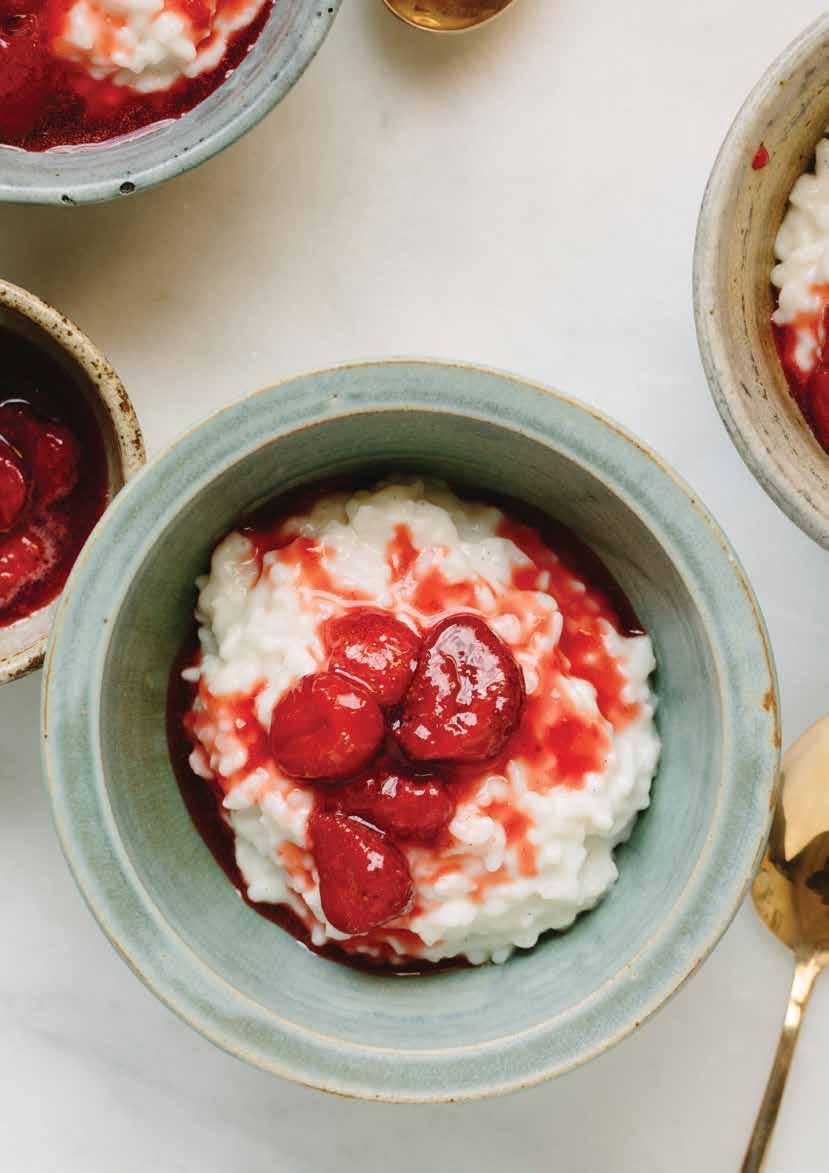
NOURISH | RECIPES PAGE 57 | WWW.NOURISHMAGAZINE.CO.NZ
RECIPES & IMAGES EMMA GALLOWAY
Spring marks the start of berry season here in New Zealand, with strawberries leading the way, followed by blueberries, raspberries, boysenberries, currants and blackberries towards the end of spring/start of summer. High in fibre, vitamin C and antioxidants, they’re a tasty way to add goodness into your life.
RASPBERRY + ORANGE SHRUB
I don’t drink alcohol, so I’m always playing around with alcohol-free beverages that still have a celebratory air about them. Fruit shrubs (aka drinking vinegars) are one I turn to throughout the year, using all manner of seasonal fruit and flavourings. Here I’ve kept it simple with raspberries and a little orange zest, but you could use any berry you have on hand. Freshly picked blackberries make an amazing shrub if you have access to lots of them, or try blueberries, strawberries or black currants. You can increase the amount of sugar if you like things a little sweeter and, of course, if you’re making for a crowd this recipe can easily be doubled or quadrupled.
Makes approx. 1 cup syrup (4–6 drinks)
1 cup (125g) raspberries, fresh or frozen
¹⁄
³ cup raw caster sugar
zest 1 orange, finely grated
½ cup apple cider vinegar
Combine berries, sugar and zest in a bowl and mix well to combine. Cover and set aside on the bench for 2–4 hours before transferring to the fridge overnight. The next day add apple cider vinegar, mix well then pass through a fine sieve, pressing firmly to extract as much flavour as possible. You should only be left with the seeds and zest to compost. Transfer syrup to a glass jar or bottle. It will store happily in the fridge for a week or two (normally I’d say indefinitely for shrubs, but this one has a lot of fruit pulp in it so it won’t keep as long). To serve, pour 1–3 tablespoons of syrup into a glass and top up with chilled sparkling or still water.
STRAWBERRY, GINGER + COCONUT RICE PUDDING
I’ve always been a fan of rice pudding, and this creamy dairy-free version is my go-to for comforting decadence. I’ve flavoured the rice with ginger, but if that’s not your thing, simply leave it out and add a splash more vanilla. The strawberry compote can be made up to 3 days in advance and is a great way to use up berries on the slightly ripe side before they go to waste.
SERVES 4–6
1 cup Aborio or other short grain white rice (available at Vetro)
2 x 400g tins coconut milk
1 tbsp finely grated ginger
¼–¹⁄³ cup raw caster sugar or pure maple syrup
1½ tbsp gluten-free cornflour
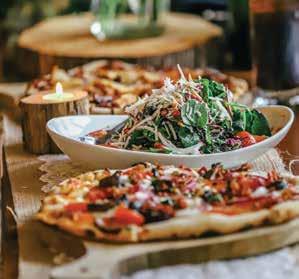
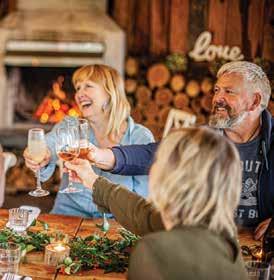
1 tsp vanilla extract
STRAWBERRY COMPOTE
2 cups strawberries, fresh or frozen
2 tbsp raw caster sugar or pure maple syrup
½ tsp vanilla extract
Place the rice into a medium saucepan, cover with plenty of cold water and set aside 2–4 hours or overnight. Drain into a colander, rinse well and set aside. Combine coconut milk, 400ml cold water and ginger in the saucepan (same one you soaked rice in). Bring to the boil, stir in soaked rice, and reduce heat and cook, uncovered for 10–12 minutes until rice is cooked, stirring often to prevent it from sticking to the bottom of the pan.
While the rice is cooking, hull strawberries and cut any larger ones in half. Place into a saucepan with sugar/maple syrup and 2 tablespoons water. Stir well, cover and cook 5 minutes or until strawberries have started to collapse. Remove lid and cook on high until syrup thickens. Remove from heat and stir through vanilla.
When the rice is cooked, add sugar/maple syrup and stir to dissolve. Combine cornflour and vanilla with quarter of a cup of water in a small bowl or jug. Pour into rice, stirring constantly for 1–2 minutes until it thickens slightly. Remove from the heat and either serve warm, topped with strawberry compote, or portion and chill before serving.
TODAY 07 863 8770 info@fallsretreat.co.nz We offer dining experiences, cooking workshops and bespoke events. www.fallsretreat.co.nz BOOK
ENQUIRE
YOUR XMAS FUNCTION
PAGE 58 | WWW.NOURISHMAGAZINE.CO.NZ
Emma Galloway
mydarlinglemonthyme.com
@mydarlinglemonthyme
Emma Galloway is a former chef and creator of the multi-award winning food blog My Darling Lemon Thyme. She is the author of three best-selling cookbooks, which focus on flavour-packed everyday recipes that happen to be vegetarian and gluten-free.


PAGE 59 | WWW.NOURISHMAGAZINE.CO.NZ
Rhubarb

PAGE 60 | WWW.NOURISHMAGAZINE.CO.NZ
RECIPES & IMAGES KATHY PATERSON
The fleshy, tart and tangy edible stalks of rhubarb appear in spring and will continue until early summer if the temperature remains in the mid-20s.

Roasted or stewed rhubarb and custard are made for each other, and who doesn’t love the combination of rhubarb with sweet strawberries. But there are many other ways to use rhubarb, from cakes and muffins to puddings, cordials and shrubs (drinking vinegars).
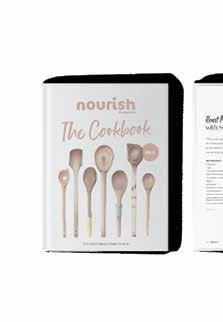
To reduce the amount of sugar needed to sweeten rhubarb, try adding a little lemon balm or ginger to stewed rhubarb to reduce acidity.
Raw Rhubarb Spring Salad
It was years ago that I first had raw rhubarb in a salad and it is quite the game-changer with its savoury tang. Be sure to choose slender bright redpink young stems, which are more delicate in flavour.
Serve as part of a shared meal with salmon, an oily fish such as trevally, grass-fed lamb or beef.

SERVES 4
2 slender, red-pink rhubarb stems
½ tsp flaky salt

1 tbsp lemon juice
1 tsp Dijon mustard
1 tsp runny honey
4 tbsp extra virgin olive oil

2 Lebanese cucumber, cut into small pieces
4 red radishes, cut into small pieces
a few leaves of butterhead or green oak lettuce, torn (optional)

1 small handful basil leaves, torn if large
Very thinly slice the rhubarb and put onto a large plate. Sprinkle with the salt and set aside for about 20 minutes. This will take away some of the sharpness from the rhubarb.
Put the lemon juice, Dijon mustard, honey and olive oil in a clean, screw-top jar. Season with salt, screw on the lid and shake well. Taste and add more salt if too acidic.
Quickly rinse the rhubarb and pat dry with kitchen paper. Put into a shallow serving bowl along with the cucumber and radishes. Add the torn lettuce, if using, and toss well.
Drizzle with enough vinaigrette to moisten, and scatter over the basil.
JUST $59 INCLUDING POSTAGE. ORDER YOURS AT: www.nourishmagazine.co.nz Out now! Get yours today. Great Xmas gift!
PAGE 61 | WWW.NOURISHMAGAZINE.CO.NZ
Scatter
Light & Fluffy Pancakes
Cooking in clarified butter or ghee gives the pancakes a fantastic colour and more flavour. You only need a smidgen if your pan or barbecue hot plate is already well-seasoned. In other words, nothing sticks!
Double the recipe for a crowd.
MAKES 16
1 cup plain flour
2 tsp baking powder
1 cup full cream milk
2 tbsp melted butter
1 free-range egg, separated
clarified butter, ghee or neutral-flavoured oil, for cooking yoghurt, for serving
Sift the flour and baking powder into a large bowl. Make a well in the centre of the flour and add the milk, butter and egg yolk. Begin by whisking the liquid ingredients then drawing in the flour as you whisk until you have a smooth batter.
Whisk the egg white until soft peaks form. Fold through a tablespoon then add the remaining egg white, carefully folding through, keeping as much air in the mixture as possible.
Heat a large frying pan or hot plate over medium-high heat. Grease then drop large spoonfuls of the mixture into the pan or onto the hot plate and cook until bubbles appear all over the surface. Flip and cook the other side until golden brown. Regulate the heat as you cook, especially if the pancakes are colouring too quickly before cooking in the centre.
Serve pancakes with roasted rhubarb and your favourite yoghurt.

Roasted Rhubarb
SERVES 4
400g tender rhubarb stems, cut into 5cm pieces finely grated zest and juice of 1 orange 2 tbsp runny honey
Heat oven to 180°C.
Toss the rhubarb, orange zest and juice, and the honey in a bowl then put into a ceramic ovenproof dish in a single layer – the rhubarb should fit snugly. Cover the dish, put into the oven and roast 15–20 minutes until tender but still holding its shape.
Tip – use 1 tablespoon runny honey then dot 1 tablespoon of redcurrant or guava jelly over the rhubarb before it goes in the oven for colour and flavour.
Kathy Paterson
Kathy Paterson is a recipe developer, food stylist and photographer. A plentiful herb garden and a trial and error vegetable garden give Kathy the starting place for her recipes along with her love of the classics with a modern twist.
www.kathypaterson.co.nz
 TIPS
Put the pancake mixture into a jug (one that pours well) and pour the equivalent of large spoonfuls into the pan or onto the hot plate.
TIPS
Put the pancake mixture into a jug (one that pours well) and pour the equivalent of large spoonfuls into the pan or onto the hot plate.
PAGE 62 | WWW.NOURISHMAGAZINE.CO.NZ
over some roughly chopped toasted hazelnuts to add texture and a few apple mint or mint leaves for colour.
GRINDING OUT WASTE
RECIPES JOSIE EVANS | IMAGES ASHLEE DECAIRES
Excelso coffee have long been on a path of reducing their waste, be it sewing the sacks the coffee beans come in into cool reusable bags and aprons or encouraging their clients to ditch the single use coffee cups, they are always looking for new ways to lessen their environmental impact.
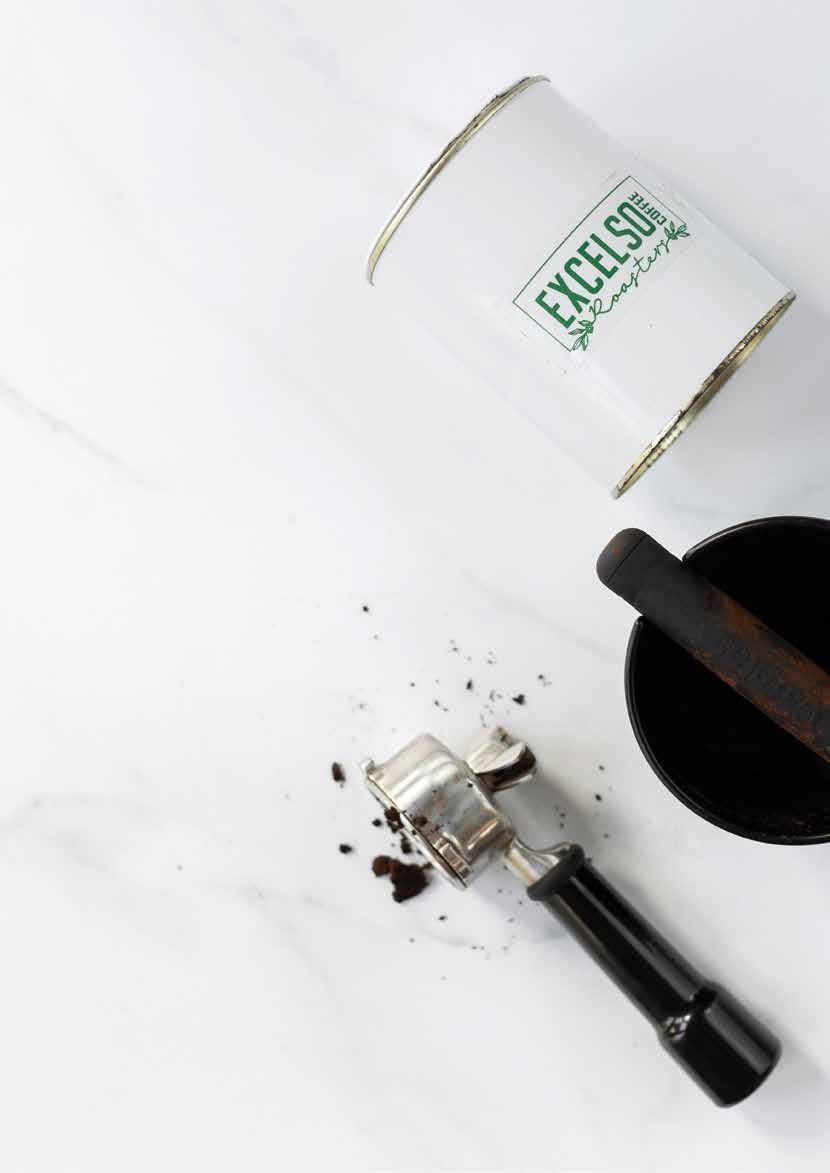
But what about the spent grinds from every coffee made?
From rubs to scrubs and getting grubby in the garden, Josie has a few great ideas on how not to let those grounds go to waste.
NOURISH | FEATURE
PAGE 63 | WWW.NOURISHMAGAZINE.CO.NZ
COFFEE BBQ RUB
Made for meat, mushrooms and everything in between, this BBQ Coffee Rub recipe is our family's new way of bringing our favourite brews home with us.
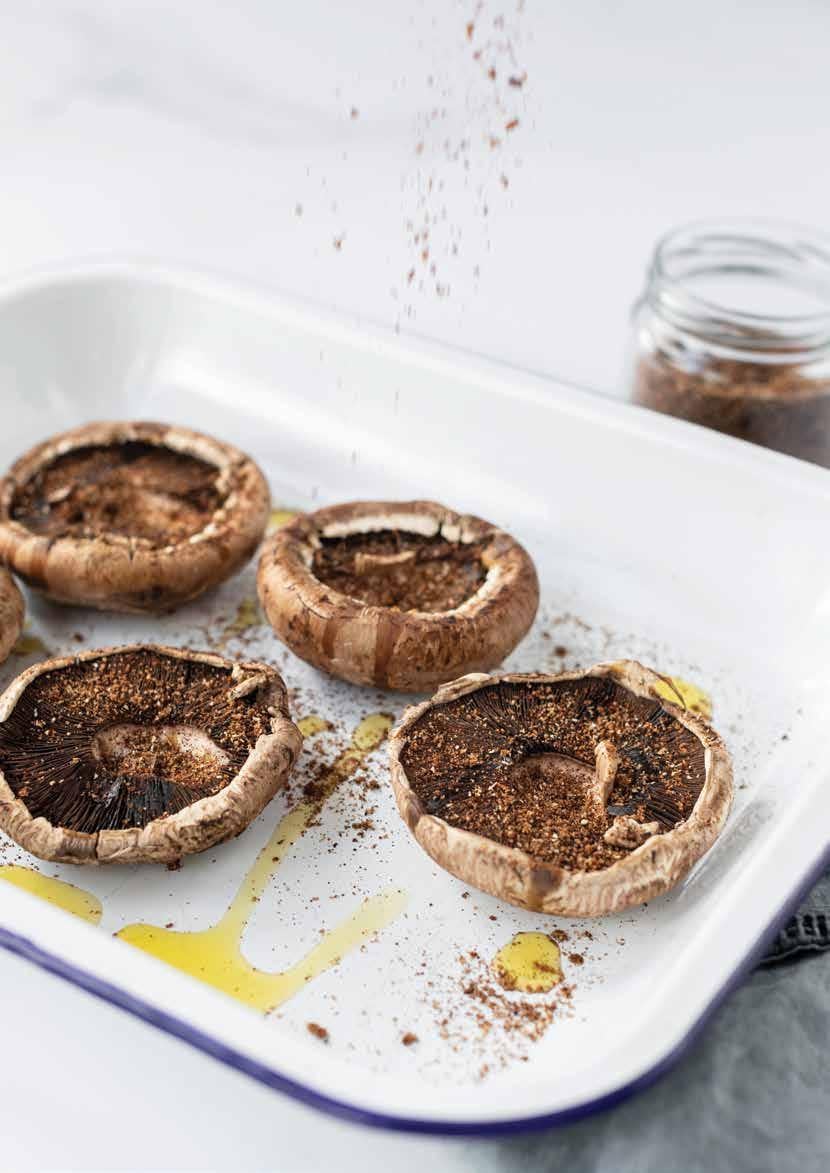
Best made with dry grinds, so if you are reusing leftovers, you may want to dry them out first.
2 tbsp coffee grinds
1 tbsp smoked paprika
2 tsp sea salt
2 tsp dried onion flakes
2 tsp dried garlic flakes
2 tbsp brown sugar
2 tsp fresh orange peel
Combine all spices in a small bowl and stir together. Store in an airtight container or jar for up to 6 months.
PAGE 64 | WWW.NOURISHMAGAZINE.CO.NZ
IN THE GARDEN
Coffee can give your garden as much of a pick me up as it does for you. Here are a few ways to use those spent grinds, be them from your brew at home or if you snapped up a bag from Excelso.
Coffee will help the food in your compost bin decompose faster. Worms love coffee, so if you have a worm farm, add the grinds in.
Coffee will add nitrogen to your soil, so either sprinkle grounds around your plants and water well or add grounds (225g of coffee grounds into 9 litres of water) to water and feed your plants. Acid-loving plants like blueberries, roses, azaleas and hydrangeas particularly love a little caffeine hit when you are done with those beans.
Some gardeners believe insects and bugs and even some animals don’t like the smell of coffee, so the grounds act as a natural repellent.
Looking for a great garden mulch?
Coffee chaff, a great byproduct of roasting coffee beans, can be mixed with wood chips or sawdust to make a great garden mulch which will help reduce soil erosion, suppress weeds and retain moisture.
www.excelso.co.nz

COFFEE BODY SCRUB
A coffee scrub can help exfoliate your skin, lifting away dull, dead skin cell build-up, leaving you with a complexion that looks more radiant and energised. Some also say it helps remove cellulite, so if you needed another reason to drink coffee, this may just be it!

¼ cup coconut oil
¼ cup sugar
¼ cup coffee grinds*
1 tbsp ground cinnamon
Dry your used grounds on a baking tray in the sun or by putting in a warm oven once turned off. Once dried completely, measure them into a bowl with your coconut oil, sugar and cinnamon and whip up with a fork or, better still, get in there with your hands. Your hands will warm the coconut oil, making it easier to mix.
Scoop into a clean jar and that’s it!
To use, smooth a small amount onto warm, damp skin, then gently massage onto your skin using your fingers and rinse off thoroughly with warm water before patting dry.
*Espresso grinds are the best; filter and plunger grounds are coarser and great if making a scrub for your feet.
Excelso Coffee
Quality mediterranean products at everyday prices ROTORUA 1131 Amohau Street, Rotorua • 07 346 0081 TAURANGA 111 Third Avenue, Tauranga • 07 579 9111 vetro.co.nz PAGE 65 | WWW.NOURISHMAGAZINE.CO.NZ
WASTE NOT
New figures recently released indicate New Zealander’s throw out more than $3 billion worth of food each year – more than $1,500 per household per year.
While many of us compost or have worm farms and some regions have food waste collections which all reduce the impact of this food going to landfill, there is a step before discarding and that is utilising. Perhaps it’s time to take a leaf out of our grandmothers’ and great grandmothers’ books and waste not want not. Those who lived through the Great Depression and rationing were, by necessity, skilful at not wasting food.
Here are a few ideas to get you started. We’d love to hear yours too, so share your tips or recipes on our Facebook page or email vicki@ nourishmagazine.co.nz
PEANUT BUTTER JAR DRESSING

Don’t wash the last of the peanut butter down the drain, instead use the jar and remaining peanut butter to make a scrummy satay like dressing. You can apply this practice to other jars and bottles too (think the bottle of sweet chilli sauce). Or I add some sour cream into a jar of my favourite pickle to make a delicious dip, spread or dressing
approx. ¼ cup peanut butter left in the jar
2 tbsp hot water

2 tbsp rice vinegar
2–3 tbsp fresh lime juice
3 tbsp neutral oil
2 tbsp soy sauce
2 tbsp honey or brown sugar
1 garlic clove, finely chopped
1–2 cm piece fresh ginger, peeled and grated
Place the hot water in the peanut butter jar, place the lid back on and give it a good shake to loosen all the peanut butter on the sides. Add the remaining ingredients and shake again until well combined.
PAGE 66 | WWW.NOURISHMAGAZINE.CO.NZ
WORDS VICKI RAVLICH-HORAN | IMAGES BRYDIE THOMPSON
APPLE CORE JELLY
Made an apple pie or crumble and been left with a pile of apple peels and cores? Before you throw them in the worm farm or compost bin, why not make apple jelly!
Peels and cores from 12 to 15 apples
Water
Sugar
Lemon juice
Place the apple peels and cores into a large pot and add enough water to cover.

Bring to a boil and cook until the cores are mushy, and the water level has reduced by half.
Strain out the apple scraps, measuring the liquid left behind. For every cup of apple liquid, add half a cup of sugar and 1 tablespoon lemon juice. Bring to a boil over high heat and cook, stirring often, until the mixture reaches the gel point (105°C).
Ladle the jelly into hot sterilised jars and seal.

BROCCOLI CHIPS
Each year, more than 282 tonnes of broccoli stems are thrown out. Apparently a third of us (37 percent) think the stalk is rubbish. The stalk is over half of what you are paying for when you buy broccoli, so don’t throw that away. Peeled and julienned, the stalk is a lovely addition to salads and slaws. Or slice it and throw it into stir-fries. Or if you have a lot, make them into broccoli chips. The mere fact they are called chips will have the family clamouring for them.
Peel the stalk and slice into chip-like batons.
Place in a bowl and toss with olive oil, grated parmesan, a little salt or other seasoning (Opito Bay Sazón would be perfect!)
Lay out on a baking tray and bake at 180°C for 15–20 minutes until golden brown.
FETA IN A JAR
I love feta but hate how I never manage to get through a whole block before something starts growing on it. So this trick has been a game changer!
Simply dissolve 1 tbsp salt in 1 cup of boiling water. Allow this to cool before placing your unused feta in a jar, covering it with the salted water. Place the lid on and store in the fridge until you need feta again.
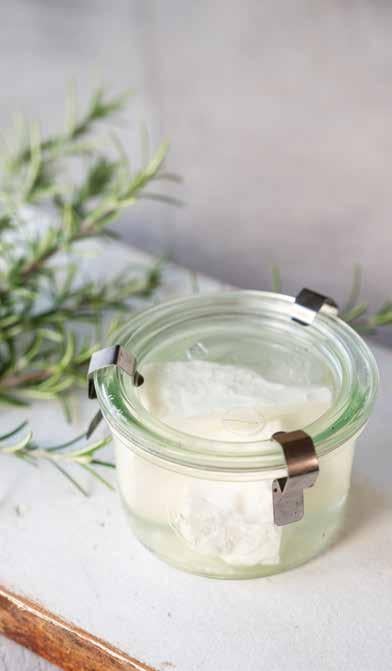
NOURISH | RECIPES PAGE 67 | WWW.NOURISHMAGAZINE.CO.NZ
LegaSea
WORDS DAVID WRIGLEY
For as long as people have inhabited these islands, we have been a nation of fishers. Ever since Te Ika-a-Māui was pulled from the ocean, we have fished for fun, for sport, for profit, and for kai.

PAGE 68 | WWW.NOURISHMAGAZINE.CO.NZ
This close relationship with the ocean and all that swims in it hasn’t always been a simple one. We haven’t always been kind to the seas that sustain us. Governments have tended to favour the interests of commercial fisheries, mainly serving international markets, when deciding how best to manage our oceans, often at the expense of the environment, tangata whenua, marine wildlife, and ordinary New Zealanders who want to fish for food and fun.
This is where LegaSea come in. The not-for-profit organisation was set up in 2012 by the New Zealand Sport Fishing Council to raise public awareness about what is happening in the seas around us. Unlike commercial fishing operations, recreational fishers have a vested interest in looking after our oceans: making sure habitats remain intact, that we are harvesting sustainably, and that our oceans remain healthy and diverse.
LegaSea set up the Hauraki Gulf Alliance to convince the government through public pressure to get rid of bottom trawling, scallop dredging, and Danish seining from the Hauraki Gulf Marine Park. The Hauraki Gulf is hugely popular with recreational fishers but is under serious threat after years of unsustainable harvesting practices by commercial fishers and toxic land run-off.
The Hauraki Gulf Alliance is typical of much of LegaSea’s work: bringing people together to petition the government to prioritise the health of the oceans for the good of the many, and to stop exploitation of the environment for the benefit of the few. LegaSea has also been integral to the Coromandel Scallops restoration programme, the Time out for Tarakihi campaign, Crayfish Crisis, and other efforts to raise public awareness and convince the government to protect our marine environments from excessive exploitation.
LegaSea’s work hasn’t only been in opposition to commercial fishing damage. Their wildly successful Kai Ika programme was originally set up to combat fish waste by recreational fishers. The idea was to take the parts of the fish that the fishers didn’t use –pretty much everything besides the fillets – and redistribute them to communities who saw these heads, frames and offal for what they are: delicious and nutritious sources of protein.
The project started small with just a few kilos of fish frames being transported from LegaSea’s filleting station in Westhaven to the Papatūānuku Kōkiri Marae in South Auckland for redistribution to the community.
Then, in 2020, Covid struck. Recreational boats weren’t going to sea and suddenly the supply of fish completely dried up, just when the community needed it the most. The Kai Ika team got in touch
with Moana Seafood, a commercial operation, and asked if they could have any offcuts. Moana immediately agreed and since then the majority of Kai Ika’s fish comes from companies like Moana and Sanford. Kai Ika now distribute over 2.5 tonnes of fish per week to communities throughout the Auckland area and have just begun operating in Wellington.
LegaSea’s willingness to work with commercial partners doesn’t stop at the shoreline. Among the many companies who contribute to LegaSea’s work are Whitehaven Wines in Marlborough.
Founders Greg and Sue White had a special connection to the ocean: they spent years sailing around the Pacific and their daughter Samantha enjoyed the first six months of her life at sea. While sheltering from a storm in the Marlborough Sounds, the family fell in love with the region and eventually settled there and began making wine.
Samantha grew up and joined the family business in 2020, along with her husband Josh Barclay. Josh was a marine ecologist and often talked about his passion for conserving the oceans. Josh introduced the family to LegaSea and an enduring partnership was born. Whitehaven developed their entry level Kōparepare range (meaning gift, present, or contribution) with LegaSea in mind, and a part of the proceeds from every bottle goes to help protect our oceans.
LegaSea is an organisation that brings people together for the benefit of the ocean and the creatures that swim in it. From the predominantly middle class, boat-owning sports fishers of Auckland, to the small Coromandel towns of the Hauraki Gulf, to the Māori, Pacifica, and Asian communities of South Auckland and Porirua, to ocean-faring Marlborough wine growers; we all have an interest in protecting our marine environments.
LegaSea is playing a vital role in bringing us together to make it happen.
www.legasea.co.nz


DAVID WRIGLEY
David is a freelance writer based in Cambridge. His work has appeared in publications such as The Guardian and Noble Rot. He is a veteran of over 20 years in the London restaurant scene.

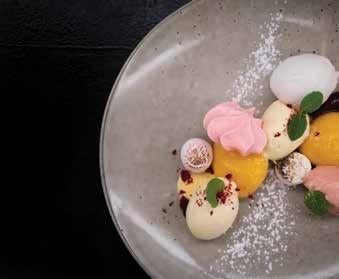

NOURISH | FEATURE ESTABLISHED 1954 Home to the Hungry & Thirsty since 1954 1096 Tutanekai Street, Rotorua info@ambroisarotorua.co.nz · (07) 3483985 PAGE 69 | WWW.NOURISHMAGAZINE.CO.NZ
Heritage TRADING COMPANY
You may have read about Heritage Trading Company in our winter issue of Nourish. In the heart of Cambridge, you’ll find this literal treasure trove. It is run by three women, Jo McIntosh, Helen Martens and Maria Gascoigne, all of whom have a talent for finding wonderful pieces and giving them a new life. This talent also stretches to finding some ugly ducklings and transforming them into treasures. It is this skill they hope to pass on with the introduction of their workshops.
Kicking off in September they have teamed up with the Waipā District Council’s Waste Minimisation to show people how you can very easily shop more consciously.
If repurposing some furniture spikes your interest, their Upholstery Basics workshop is a great place to start.
Or if steering away from fast fashion is something you want to learn more about, make sure you head along to their pop-up event Closet Confessions.
Heritage Trading Company
40 Duke Street, Cambridge
www.theheritagetradingcompany.com
SLOW RETAIL
Working with Waipā District Council’s Waste Minimisation Team, The Heritage Trading Company Ltd would like to bring you an evening where we will show you how to reduce your waste, shop more consciously and save money with a focus on clothes, furniture and homewares. It will be an interesting, informative and a fun way to learn how to save your wallet and the planet and give back to your local community.
Thursday 14 September, 7.00pm
Cost $10.00
HOW TO DETERMINE YOUR OWN STYLE
A three-week course (one night a week) where you will explore the design, colour and style basics so you can work out what your decorating style is. Come away with the confidence to know what you like and why and a completed colour board of a room of your choice.

Three weeks starting Thursday 26 October, 7.00pm
Cost $225.00
UPHOLSTERY BASICS
Learn to recover a simple footstool or chair pad.
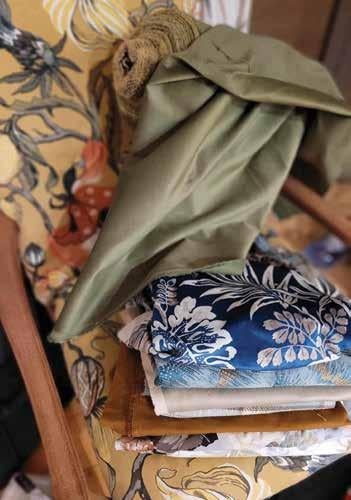
Thursday 23 November, 7.00pm
Cost $100
CLOSET CONFESSIONS
A pop up curated collection of preloved women’s fashion, just in time for spring. Featuring designer label preloved fashion, enjoy the opportunity to revitalise your wardrobe without breaking the bank. Brought to you by Rachael and Alex, who bring combined retail experience in women’s fashion and a particular love of beautiful dresses.
Thursday 5 October, 6.00pm
FREE
Tickets available from The Heritage Trading Company Ltd.
Learn
PAGE 70 | WWW.NOURISHMAGAZINE.CO.NZ
FULL MONTY ORGANIC GARDENING WORKSHOP

Sunday 24 September / Sunday 8th
October / Sunday 5 November
For more details and to book a class at Falls Retreat see www.fallsretreat.co.nz
Learn
ESSENTIAL BARISTA COURSE
Over the space of three days, Excelso’s baristas will go over the basic principles of espresso-based coffees and focus on developing the essential barista skill set. This course highlights the core elements of making excellent coffee on a commercial machine.

$475pp
17 October – 19 October
14 November – 16 November
28 November – 30 November
12 December – 14 December
Bookings through excelso.co.nz or at the roastery, 112 Third Avenue West, Tauranga.
FALLS RETREAT:
Falls Retreat have scheduled another series of cooking and gardening workshops, sharing their knowledge of growing organic veg and cooking food from scratch. All workshops cost $150pp and include morning tea on arrival, an interactive demo with take home notes and a delicious shared lunch created by the award-winning kitchen team.
PASTA MAKING
Sunday 24 September
EXCELSO:
TRAINEE BARISTA SCHOOL HOLIDAY PROGRAMME
ARKANDA: CHRISTMAS CLASSES
Wayne Good’s sell-out Christmas cooking demonstrations, held in his Gordonton cottage, are back for another year.
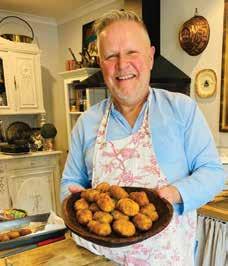
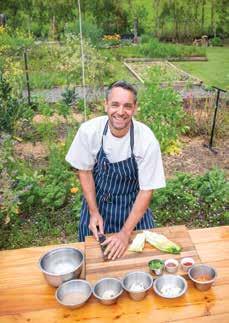
PICKLING & PRESERVING
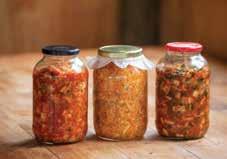
Sunday 8 October
SALADS & DRESSINGS
Sunday 5 November
This 4-day programme is run specifically for high school aged students looking for a job as a barista. It combines both commercial classes, The Essential Barista Course, and Finishing School. Our Finishing School focuses on perfecting your pouring technique and learning to pour latte art.
$550pp
26 September – 29 September
3 October – 6 October
Bookings through excelso.co.nz or at the roastery, 112 Third Avenue West, Tauranga.
All classes are $85 per head and includes welcome tea/coffee, demonstration, lunch with drink and recipes to take home.
November dates:
9.30am, 11th, 12th, 14th, 17th, 18th, 19th, 21st, 22nd, 24th, 25th, 26th and 28th. 6.30pm, 15th and 29th.
December dates:
9.30am, 1st, 2nd, 3rd, 5th, 6th, 8th and 9th.
Please book via email wayne@arkanda.co.nz or by phoning +6421898909
PAGE 71 | WWW.NOURISHMAGAZINE.CO.NZ
Lucky Taco - The Book
Sadly, Mexican food is still not one of them. Sure, you’ll find some outliers, Tacos Tocayo in Tauranga being one of them, but Mexican food for New Zealanders still generally means some crispy corn taco shells from an Old El Paso kit with spiced mince, shredded iceberg and some sour cream. Don’t get me wrong, I love that concoction! But it’s not Mexican.
Otis Frizzle, one half of Lucky Taco, also has fond memories of the Old El Paso taco but was lucky enough to travel to Mexico as an eleven-year-old and discover what Mexican tacos are all about.
Otis and wife Sarah created Lucky Taco 10 years ago. The idea came to the two successful creatives after honeymooning in LA and falling in love with not just the taco, but the taco truck. “They were on every corner!” says Sarah. “Old ones. New ones. Gourmet ones. Never-changed-in-50-years ones. Delicious, spicy, humble, fresh, honest tacos, eaten curb side with salsa dripping down your forearm.” The problem came when they were home, back in New Zealand, and had the taco craving. So Sarah began making them at home.
The pair say when they first dreamed of starting a taco truck, they wanted to focus on TWO things. One, tacos and, two, a truck. The mantra was, ’A few things done well’. They didn’t want a restaurant, or to do a full Mexican (or Tex-Mex) menu.
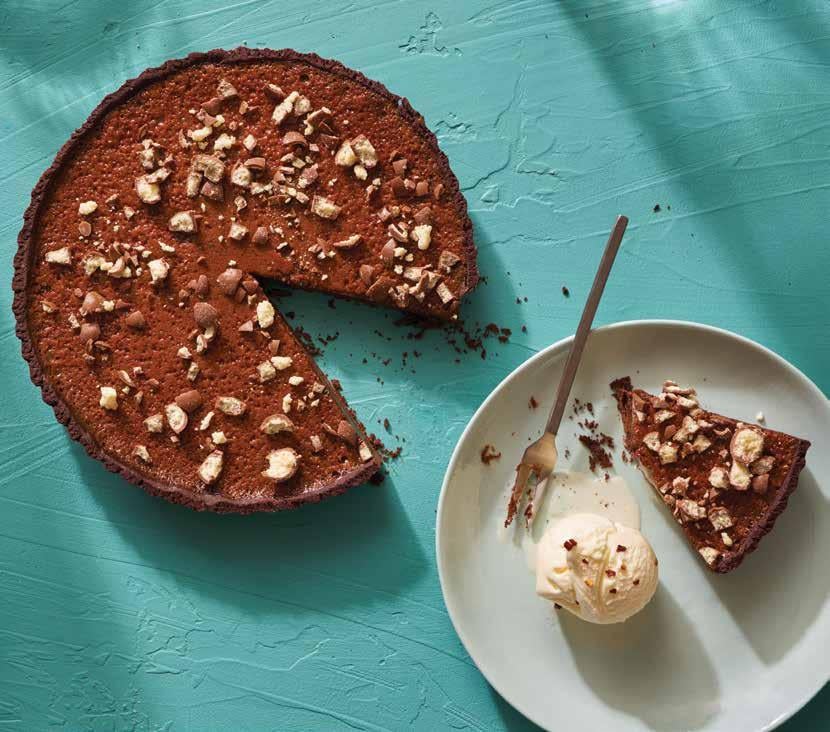
The New Zealand culinary scene is pretty lucky. We have a delicious array of authentic cuisines available for us to discover and enjoy.
WORDS VICKI RAVLICH-HORAN | IMAGES © VICTORIA BALDWIN
PAGE 72 | WWW.NOURISHMAGAZINE.CO.NZ
And in May of 2013 they did just that, opened Lucky Taco the food truck. Preceding this they travelled to Mexico for some immersive culinary training and eating.
Fast forward 10 years and Lucky Taco is possibly one of the most successful food trucks in New Zealand. Along with the truck they now have a retail range of sauces and meal kits. The book is another way you can recreate a Lucky Taco taste at home.

They are clear from the outset that this book is not a Mexican cookbook but instead how to make some of the original awardwinning Lucky Tacos as well as a few other dishes Sarah and Otis love to make at home and for friends and family.

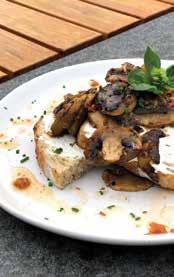
What this book does really well is explain some of the key ingredients in Mexican food along with how to create some foundation sauces and salsas, not to mention the likes of a soft tortilla. It’s a great introduction for New Zealanders to dip their toes into this vibrant cuisine.
CHILLI CHOC MALT TART
Chilli. Chocolate. Tart. YES! Chilli and chocolate is always a winner. Impress your friends (or make new ones) with this unexpected showstopper.
SERVES 8–10
FOR THE CHOC PASTRY
1 small egg
45g icing sugar
50g cocoa
160g plain flour
¼ tsp salt
140g cold unsalted butter, cut into 5cm cubes
½ tsp Lucky Taco Habanero Hot Sauce
FOR THE MALTED CHOC FILLING
150g milk chocolate (we use Whittaker’s)
2 tbsp barley malt syrup/extract (we use Ceres brand — look in your local supermarket)

60g unsalted butter
¼ cup cream
2 eggs 1 egg yolk
50g sugar
20 Maltesers, crushed into pieces chilli flakes (optional)
For the choc pastry, beat together egg and icing sugar in a small bowl until combined.
Put flour, cocoa and salt in a food processor and pulse to combine. Scatter cold cubes of butter evenly over flour, cocoa and salt. Add the icing sugar and egg mixture, along with hot sauce, to the food processor. Pulse to combine, but don’t let it come together into a ball. Tip mixture on to a lightly floured surface and gently knead together until smooth. Flatten into a disc, wrap in greaseproof paper and chill in the fridge for 30 minutes.
On a well-floured surface, roll out chilled pastry to a little bigger than the base of a 20–23cm tart tin with a loose base. Slide base of the tin under pastry to help you lift it into the tin. Gently press pastry up the sides of the tin to line the walls, then trim with a small knife. Save any overhangs to patch up any cracks after blind-baking. Prick pastry base all over with a fork, then place in freezer for 20 minutes.
Preheat oven to 190°C. Line pastry base with foil and fill with baking beans. (You can use any dried pulse or beans for blind-baking. It just adds weight to the dough so the pastry base doesn’t rise.) Bake for 15 minutes. Remove beans and foil and bake for a further 10 minutes. Then remove from oven and patch up any cracks that have formed with leftover pastry.
For the filling, reduce oven temp to 150°C.
Place chocolate, barley malt syrup, malt, butter and cream in a heatproof bowl sitting over a saucepan of simmering hot water. Stir occasionally, until smooth and melted. Remove from heat and set aside.
Whisk eggs, yolk and sugar with a hand beater or electric hand-whisk until light and fluffy. Fold this light, fluffy egg mixture through the melty-choc mixture until combined. Pour mixture into pastry case and bake for 35 minutes, until just set. Allow to cool.
Sprinkle crushed Maltesers and a few chilli flakes (if using) over the top — don’t go crazy with the chilli flakes, as they are quite spicy. Serve with vanilla ice cream.
At the Pacifica Complex 112 Tara Rd, Papamoa p (07) 542-0190
whiteginger_pacifica
www.pacificapapamoa.com
Extracted from The Lucky Taco Cookbook by Sarah and Otis Frizzell, published by Penguin Random House NZ
NOURISH | REVIEW PAGE 73 | WWW.NOURISHMAGAZINE.CO.NZ
EVENTS
TAURANGA FARMERS MARKET

Where local and convenience collide. The Tauranga Farmers’ Market is on every weekend, rain, hail or shine.
Saturday 8am–12noon
31 Fifth Ave, Tauranga
www.tgafarmersmarket.org.nz
FAMILY ROAST AT PICNICKA
Sunday family roast night at Picnicka. Lamb shoulder served with roast potatoes, salad and vegetables. Bookings essential.
Every Sunday night
$119 for a family of 4 Elizabeth Towers, 1/38 Elizabeth Street, Tauranga www.picnicka.com
SALTWATER’S PAELLA, SANGRIA AND ROSÉ LUNCH
Come along to Saltwater every Sunday during spring and enjoy a family style three course lunch consisting of Saltwater’s famous paella, two entrees and a dessert plus a sangria*.
Plus, specials on rosé and sangria running all afternoon.
*Sangria can be substituted for a house wine, soft drink or tap beer.
Every Sunday lunch in spring.
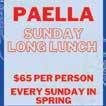
$65 per person
203 Maunganui Road, Mount Maunganui For bookings head to saltwaterseafood.co.nz
COOKING DEMONSTRATION WITH WAYNE GOOD FROM ARKANDA LIVING AND ANTIQUES

Mainly Meat - Preparing a whole eye fillet, cooking a steak and making sausages. Includes homemade Worcester sauce.
$85pp
9.30am, September 16 and 17.
128A Whitikahu Road, Gordonton. Call 021898909 or email whgood1200@ gmail.com for bookings and details.
GAME NIGHT – BLIND WINE TASTING DINNER: THE AUSTRALIAN EDITION
Join Solera for their second Game Night – Blind Wine Tasting Dinner. Enjoy a sixcourse dinner paired with a masked wine for your team to guess the colour, grape variety, vintage, region, and producer of each wine and possibly win a $200 voucher.
Sunday 17 September
$130 per person
165 Maunganui Road, Mount Maunganui Phone 07 572 0246 to book
CHARITY PRE-LOVED FASHION SHOW
Proudly Supporting Women’s Refuge Dress up for a fabulous evening of preloved designer fashion, music, food, drink and fun. Limited tickets available so spread the word, save the date and let’s create change together!

Thursday 12 October 7pm-10pm
Mount Golf Club , 15 Fairway Avenue, Mount Maunganui
Early Bird Tickets $75, GA $85 www.myetickets.co.nz/tickets/277/ details
TAURANGA ARTS FESTIVAL

The 13th biennial Tauranga Arts Festival is here, bringing 10 days and nights of the best performances you’ll see all year.
19–29 October
Various venues around Tauranga www.taurangafestival.co.nz
WAIKATO MUSEUM
RITA ANGUS: NEW ZEALAND MODERNIST | HE RINGATOI HOU O AOTEAROA

This touring selection from Te Papa brings together 20 works by one of Aotearoa New Zealand's most iconic 20th century artists. Open until 17 September, free entry.
1 Grantham Street waikatomuseum.co.nz
TAONGA TALKING

An eclectic and intriguing selection of objects from Waikato Museum’s collection, each one individually picked by our kaimahi (staff members).
Open until 15 October, free entry.
1 Grantham Street waikatomuseum.co.nz
NATIONAL CONTEMPORARY ART AWARD

Do you agree with this year’s $20,000 grand prize winner or will you pick another artwork for the People’s Choice Award?
Open until 12 November, free entry.
1 Grantham Street waikatomuseum.co.nz
TAURANGA DIWALI FESTIVAL
A feast for the eyes, right at your doorstep. Enjoy soulful Kathak dance, devotional Kirtan music and many other colourful performances as well as Indian street food, face painting and more. Gold coin donation

4pm–9pm, 28 October
Tauranga Historic Village www.facebook.com/ thetaurangadiwalifestival
Sunday September 17th Game Night B ind W ne Tasting D nner Solera Australian Edition PAGE 74 | WWW.NOURISHMAGAZINE.CO.NZ













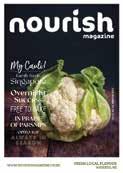


MARKETPLACE COOK. BAKE. Create. SPRING COOKWARE & BAKEWARE COLLECTION IN STORE NOW @READ BROS. 308 Pollen St, Shortland, Thames www.readbros.co.nz SHOP DIRECTORY 12 CHURCHILL ROAD, TAURANGA | 07 579 9781 EPICUREAN EXPERIENCE tgatastingtours Email STYLE New concept store in Cambridge Vintage & antique Homewares restORe, reUSe, reLoVe 40 Duke street, cambriDge shOp@theheRitagetraDingcompany.com OPEN THURS - SUN 10AM TO 4PM 128 Whitikahu Rd, Gordonton, Hamilton | www.arkanda.co.nz DISCOVER NEW TREASURES AT OUR ANTIQUE BARN Enquire About Our Cooking Demonstrations Get a FREE packet of Yates Heirloom seeds this Spring! PLUS each quarter, we’ll send you a copy of the latest Nourish Magazine and some great discount vouchers. *Limited to the first 30 subscribers. Seed packet may vary to one shown. Become a Nourish VIP Sign up today nourishmagazine.co.nz/shop
Discover a world of flooring inspiration, leading brands and expert advice in our showroom.


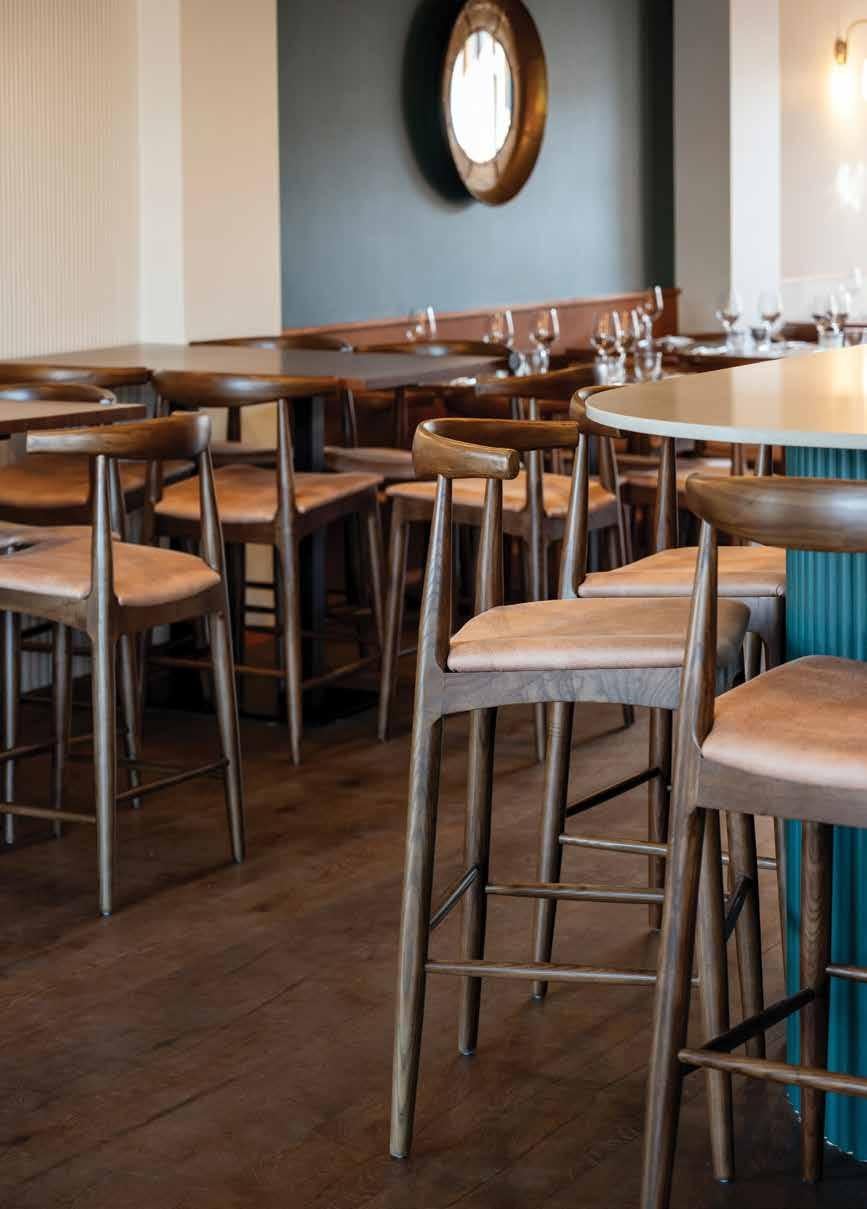 Timber Flooring: Godfrey Hirst Oak Elegance in colour Co ee at Sailor Bar & Gantry, Mount Maunganui
Timber Flooring: Godfrey Hirst Oak Elegance in colour Co ee at Sailor Bar & Gantry, Mount Maunganui